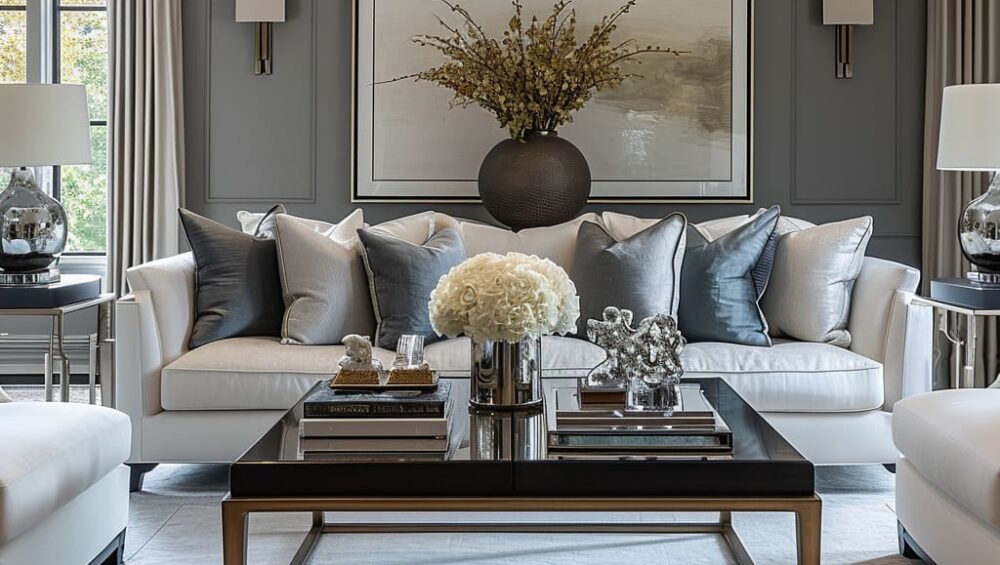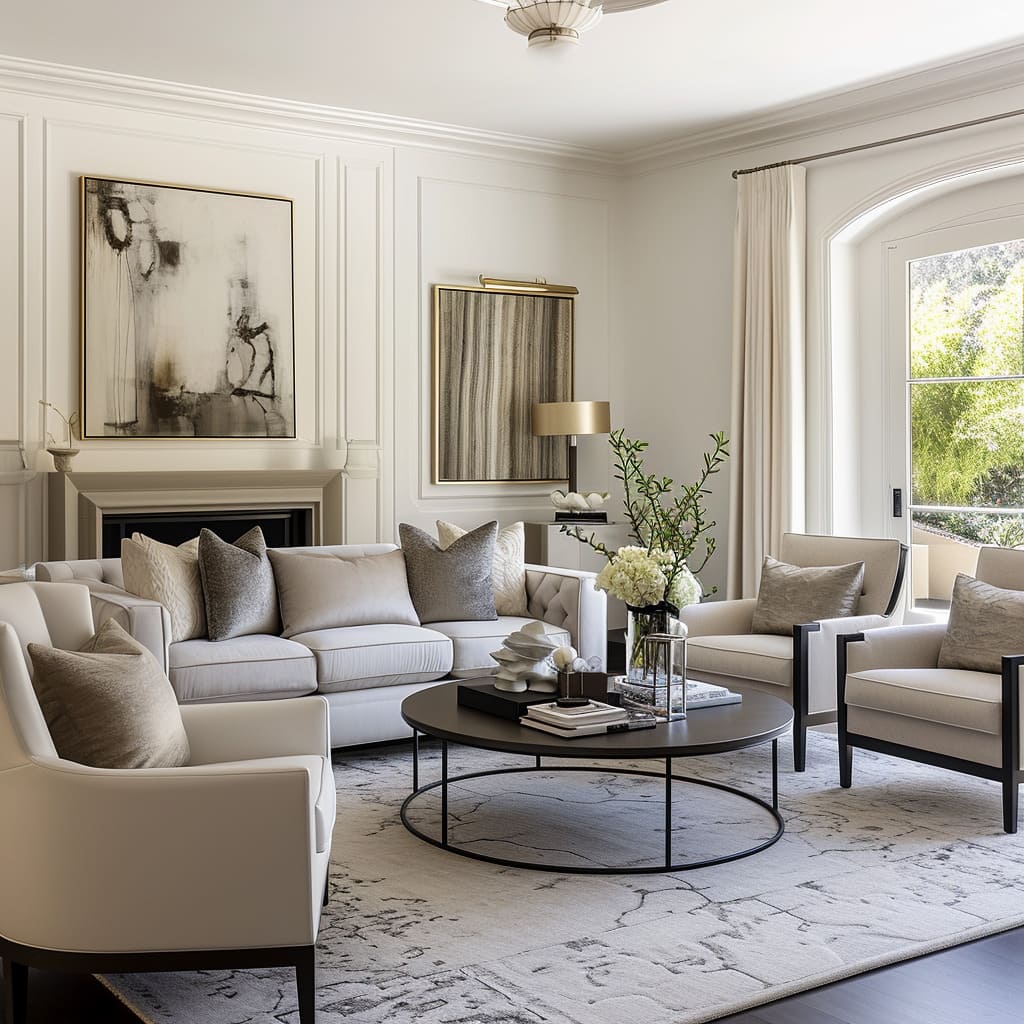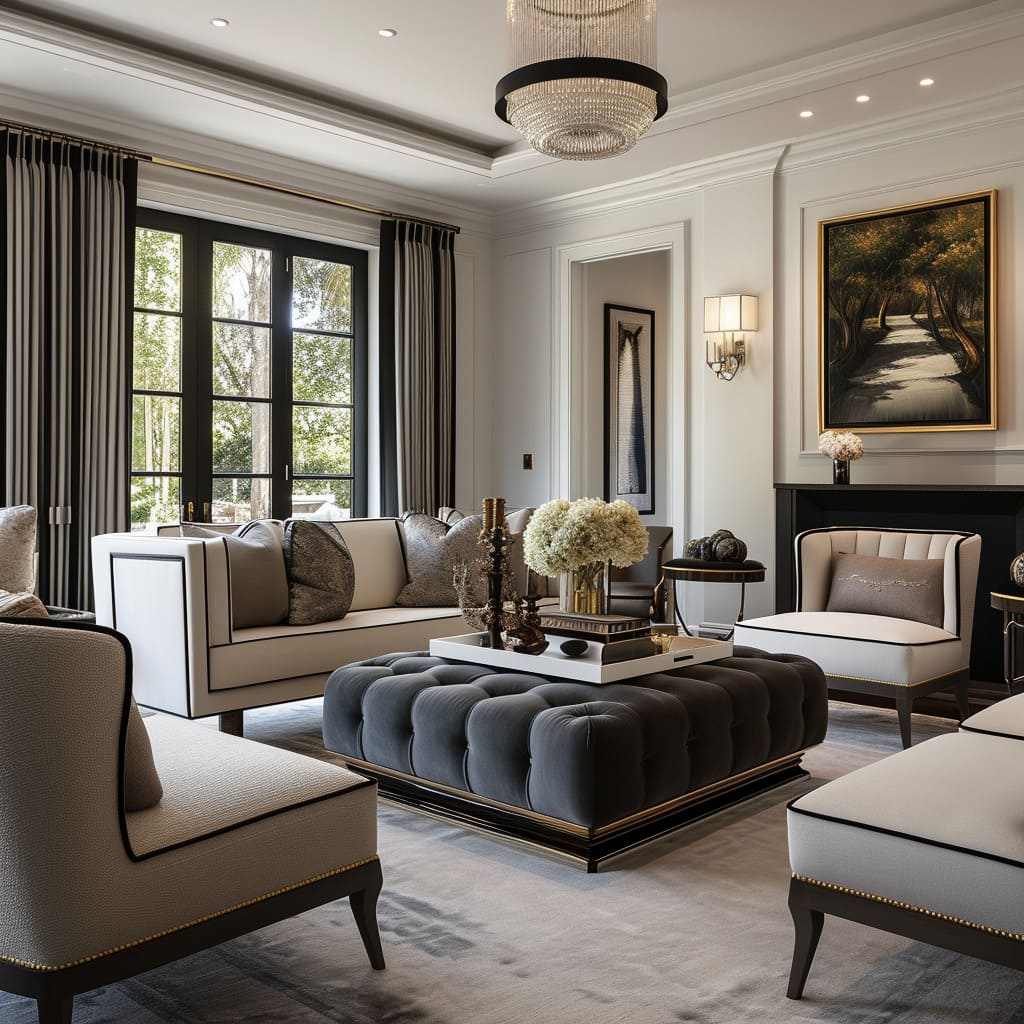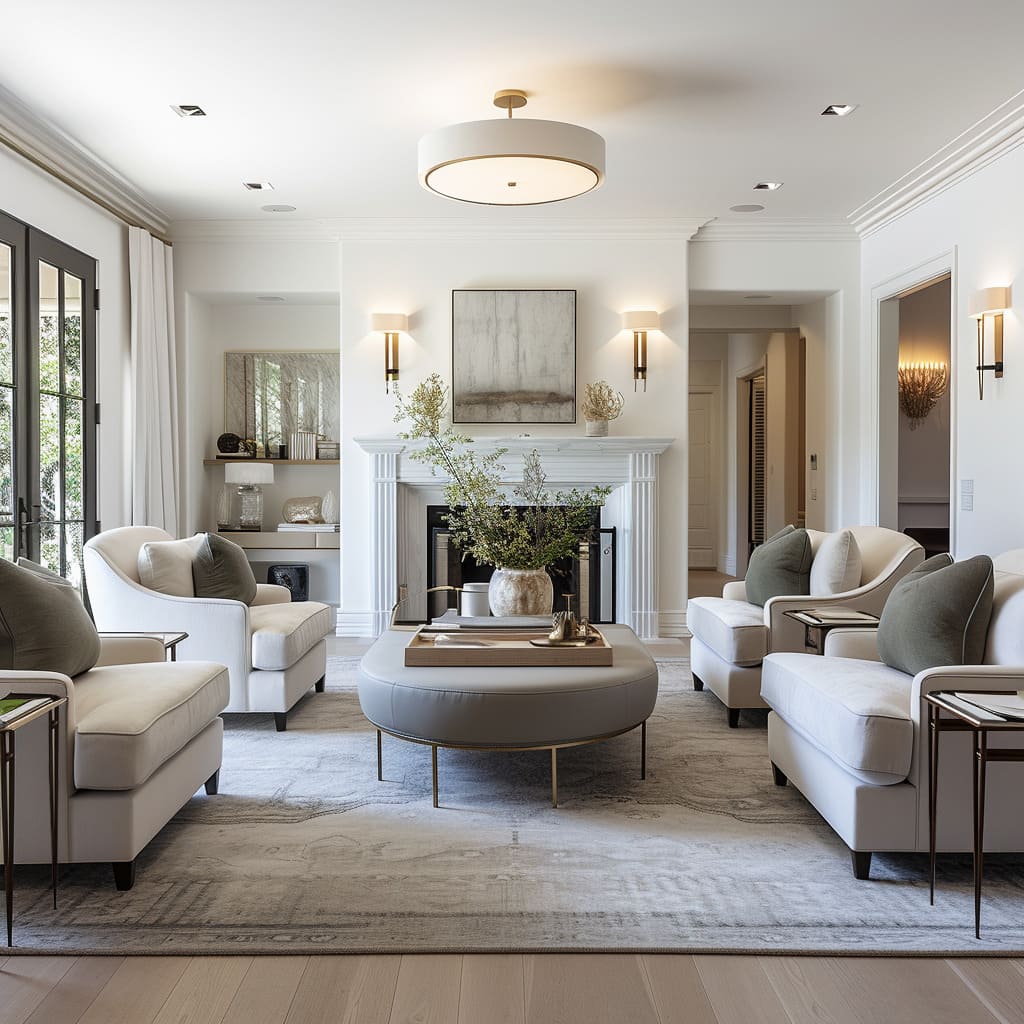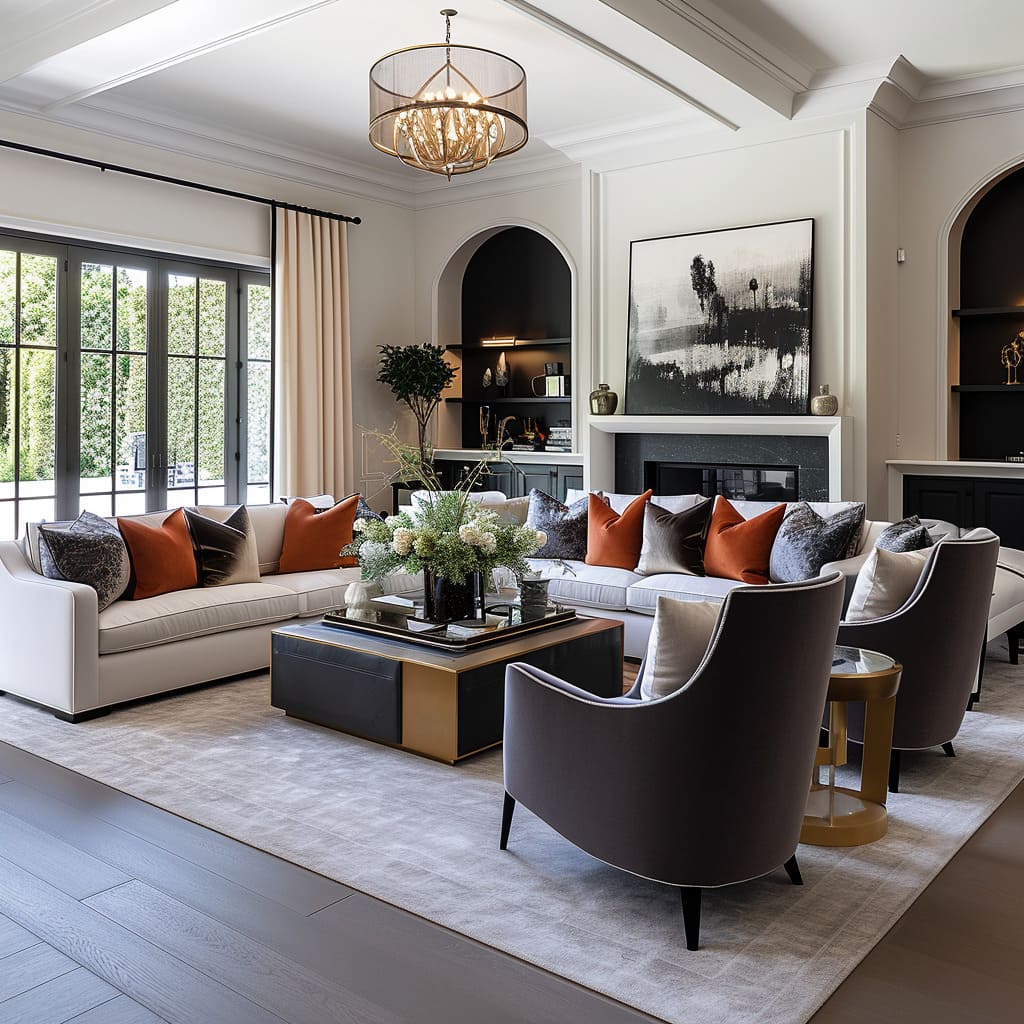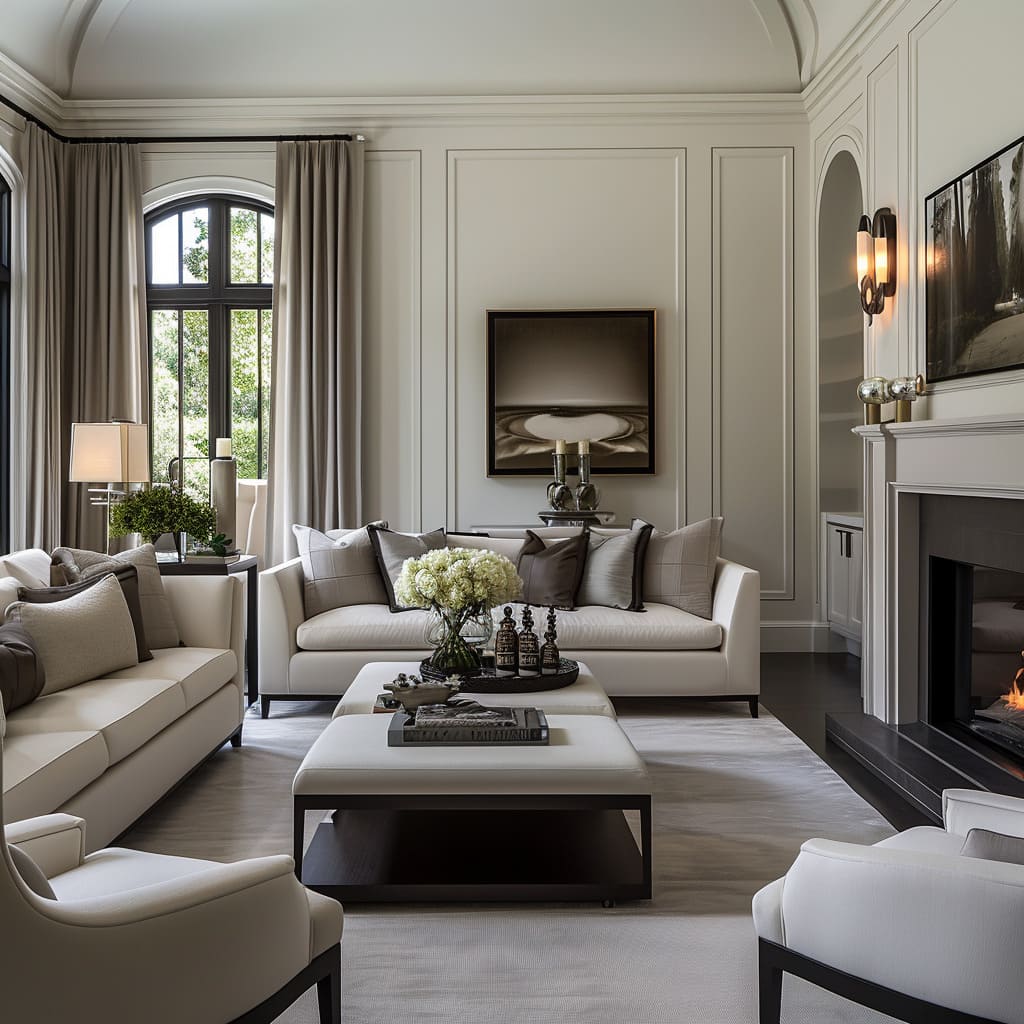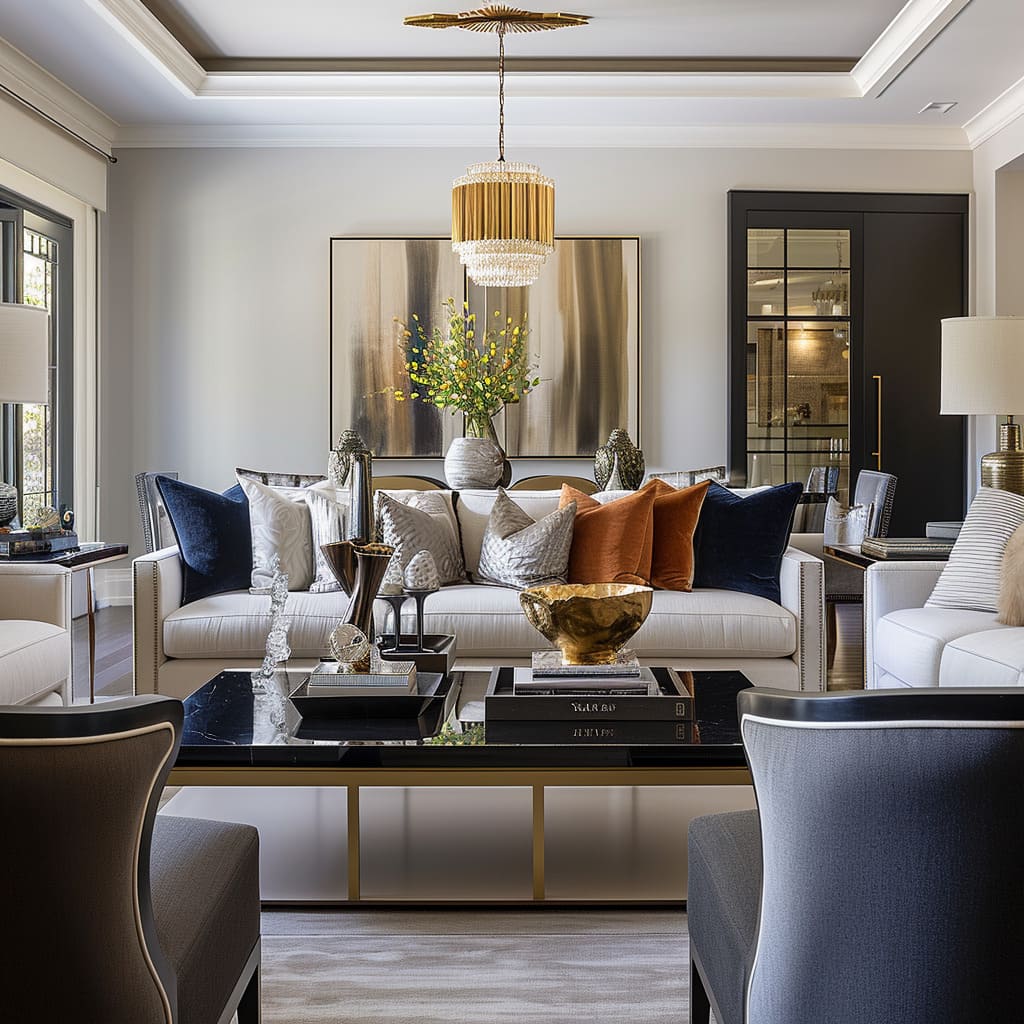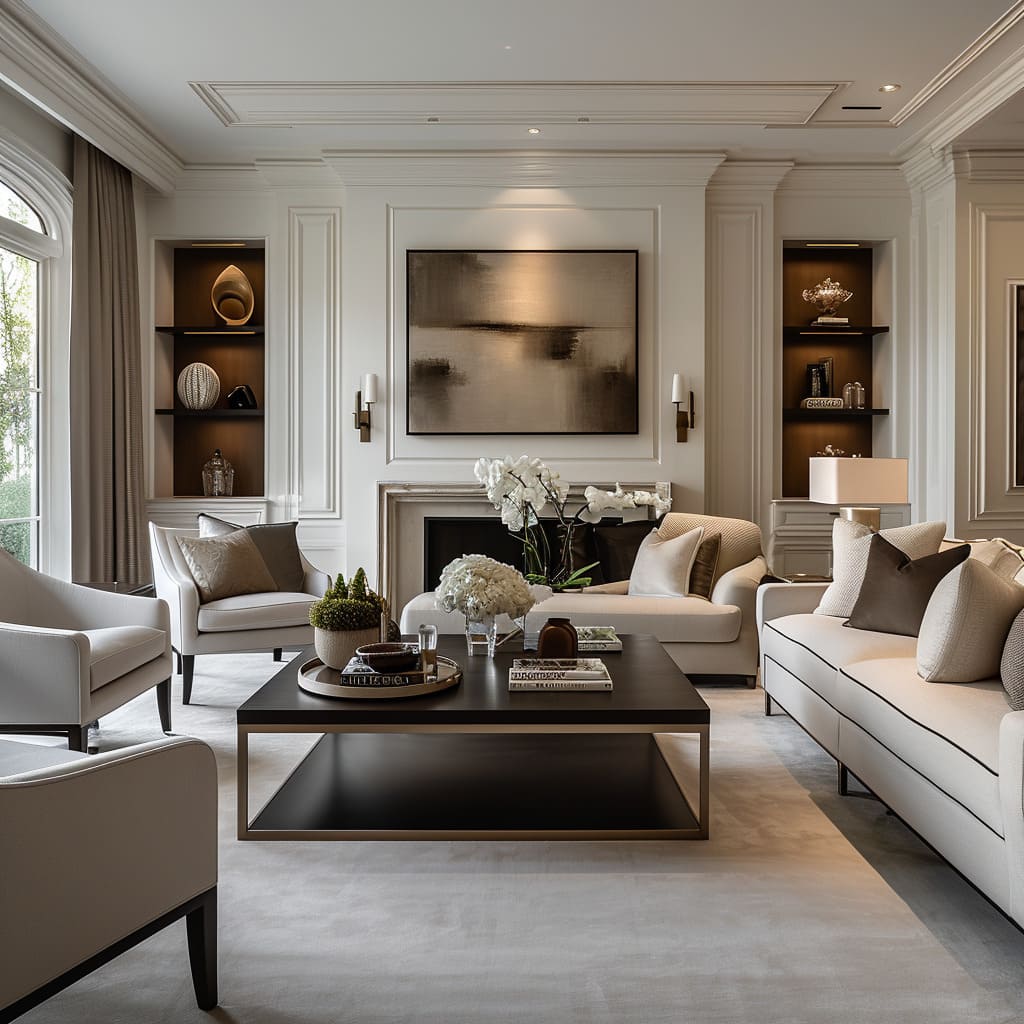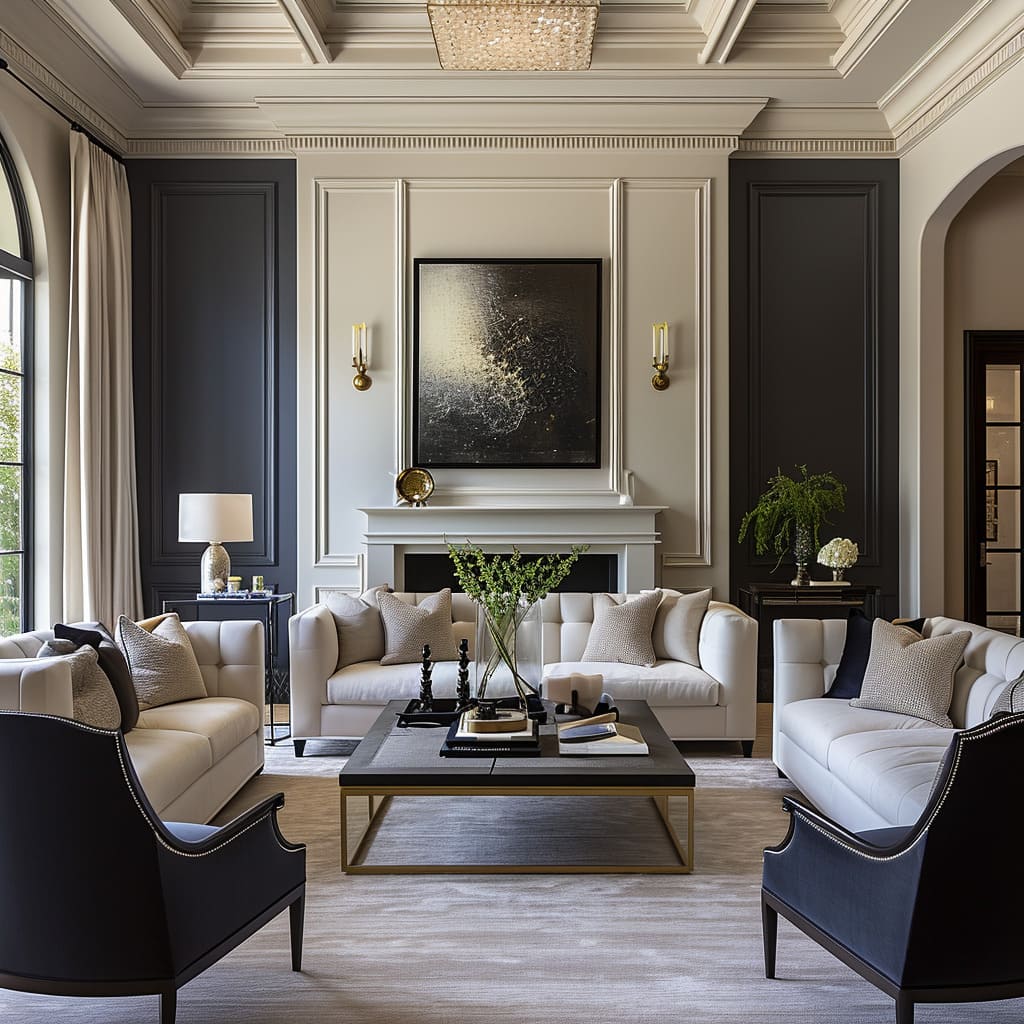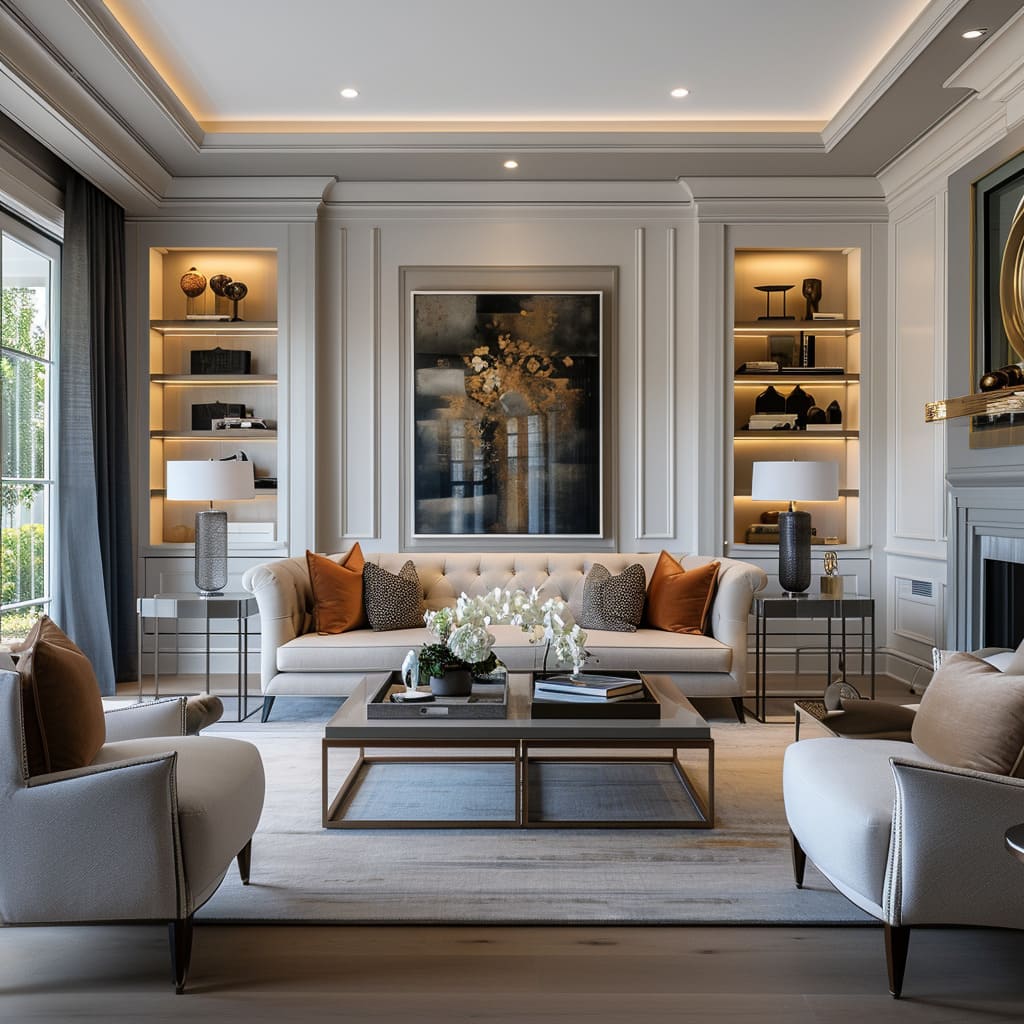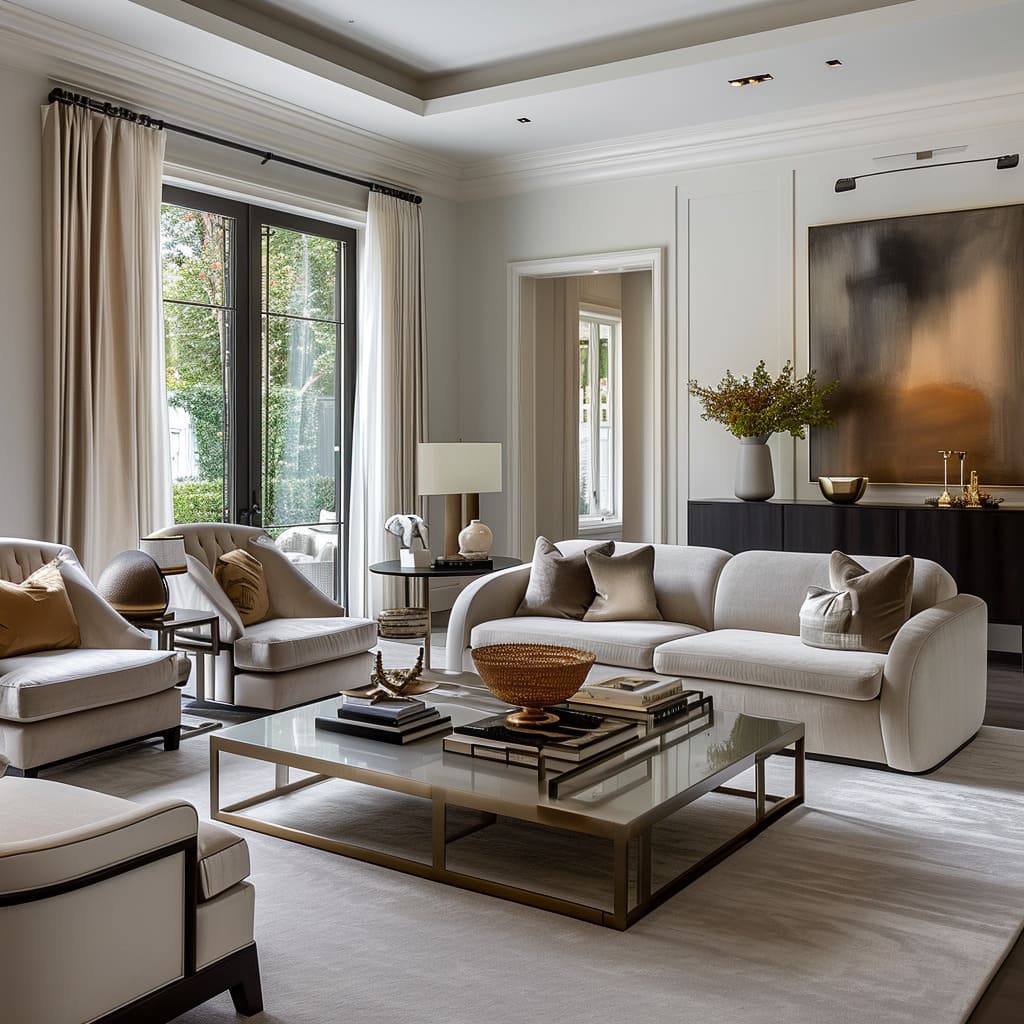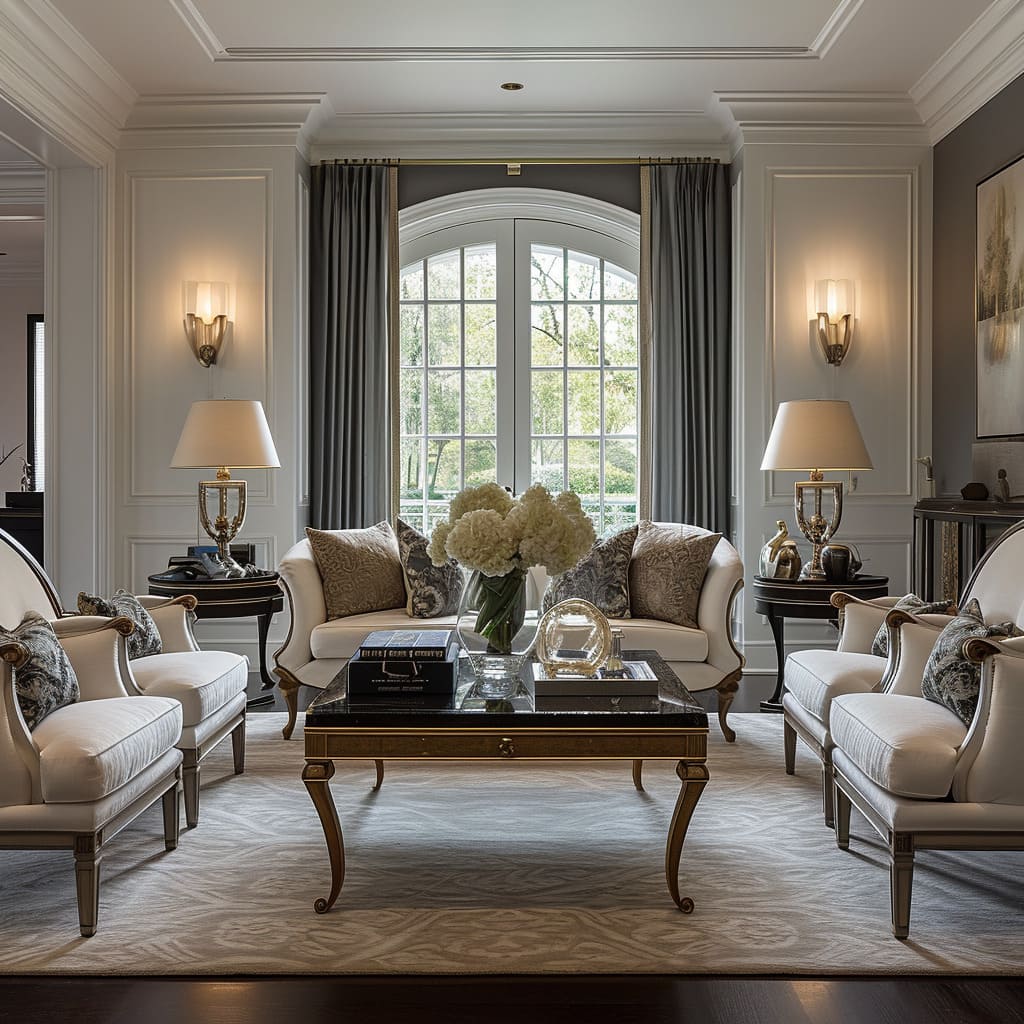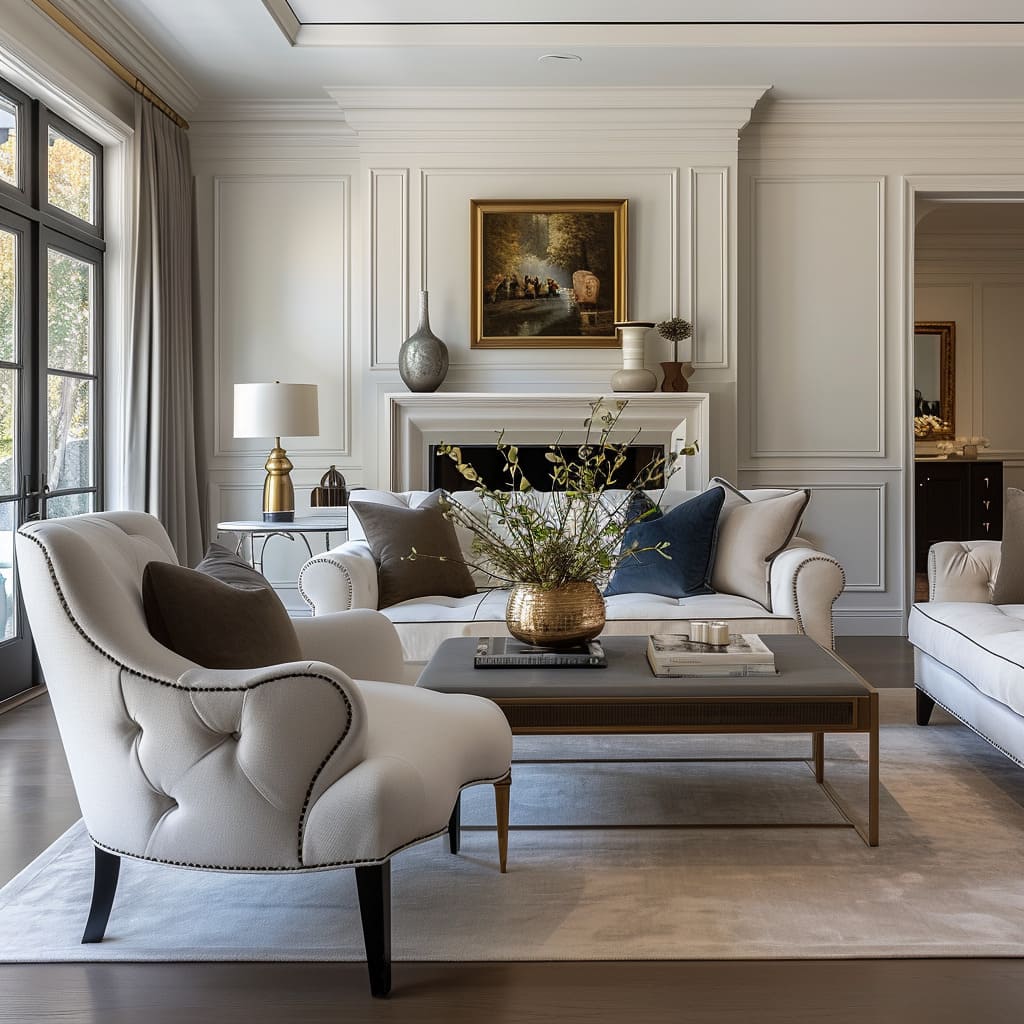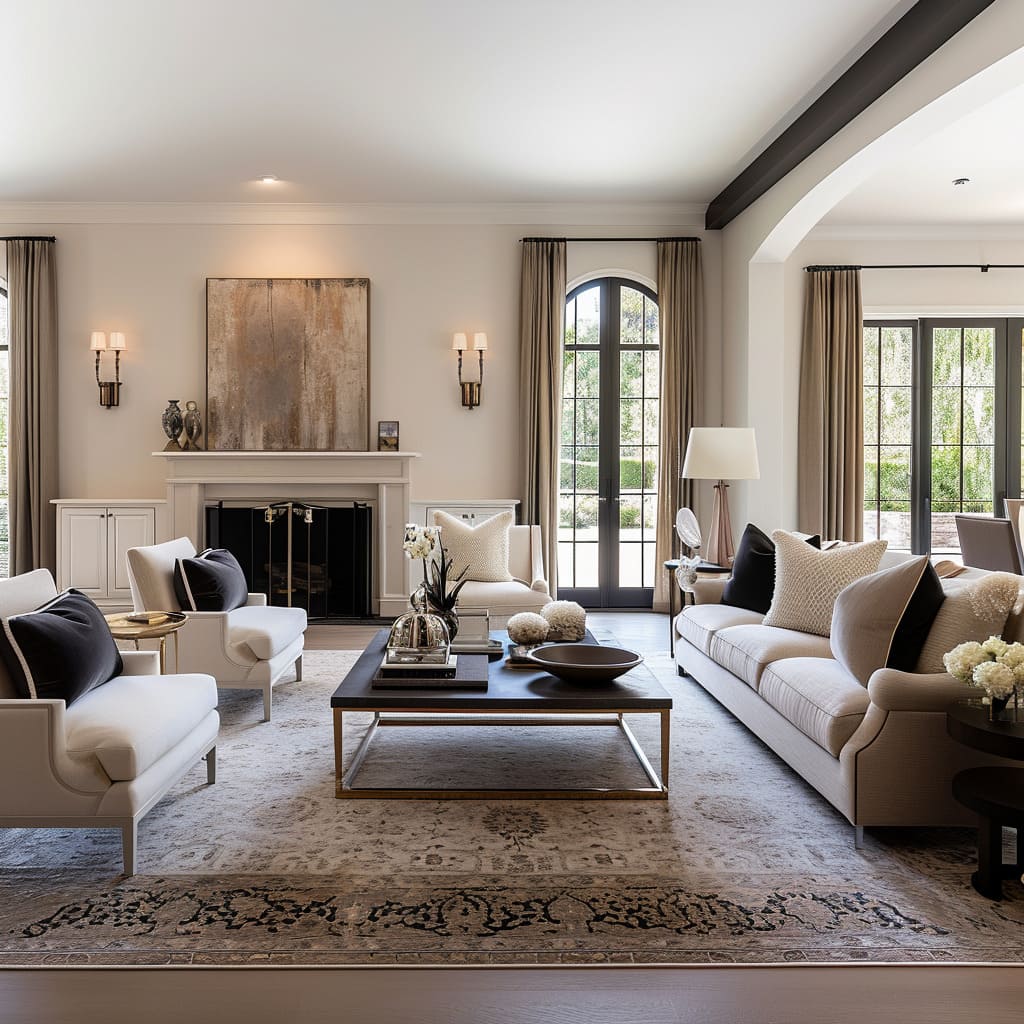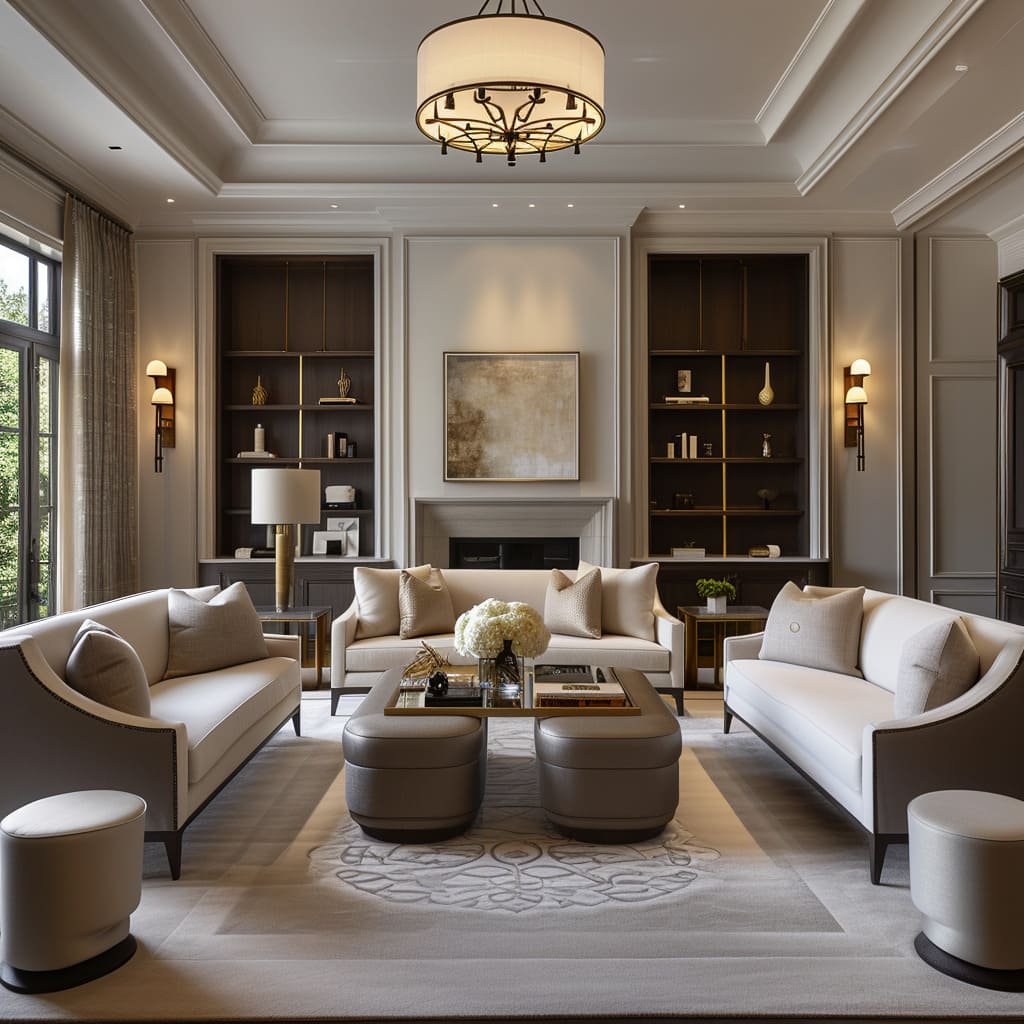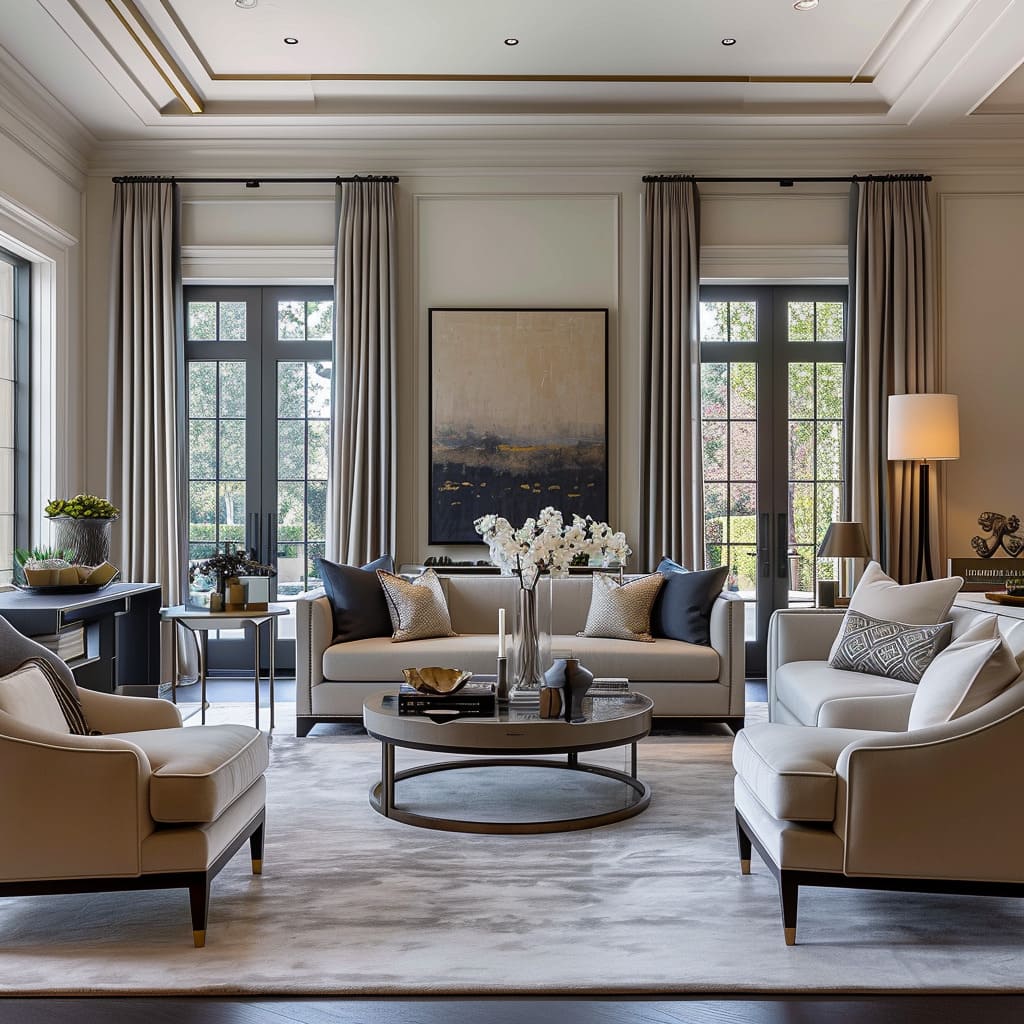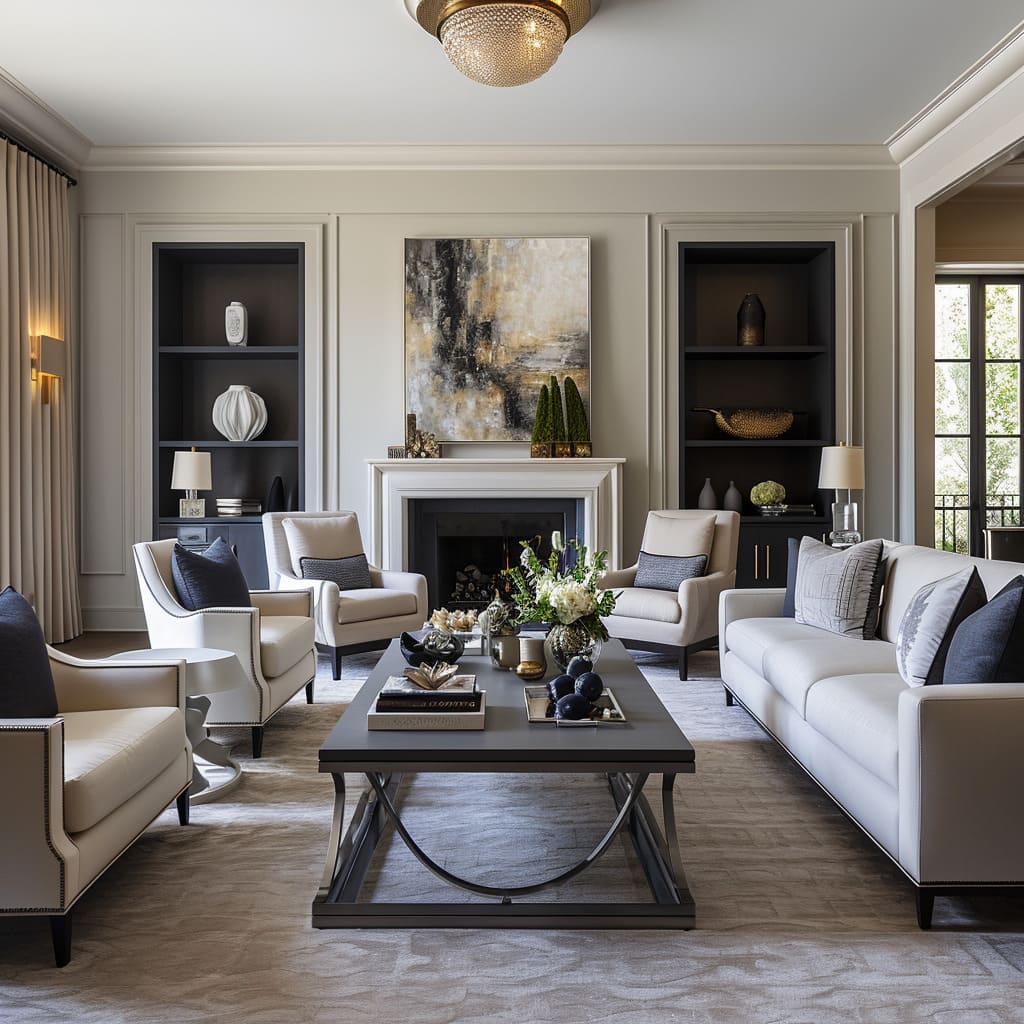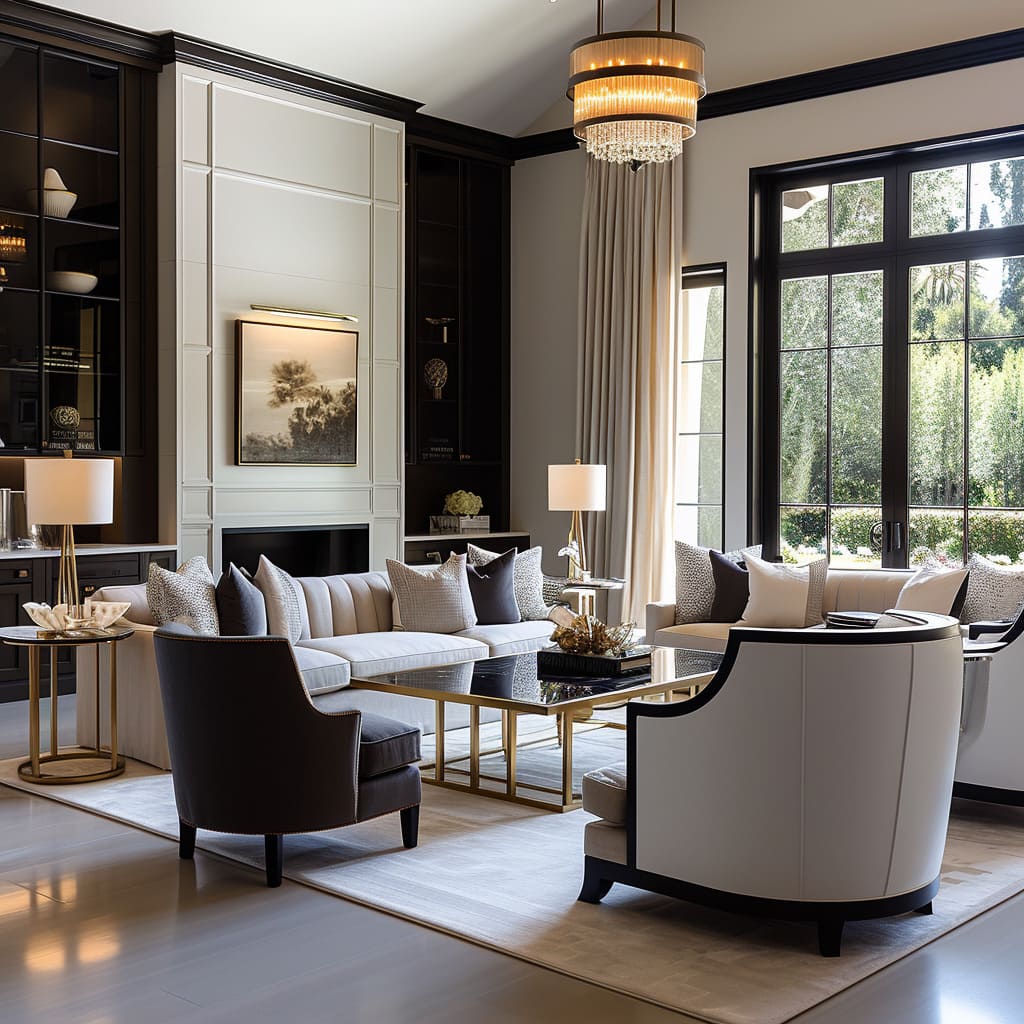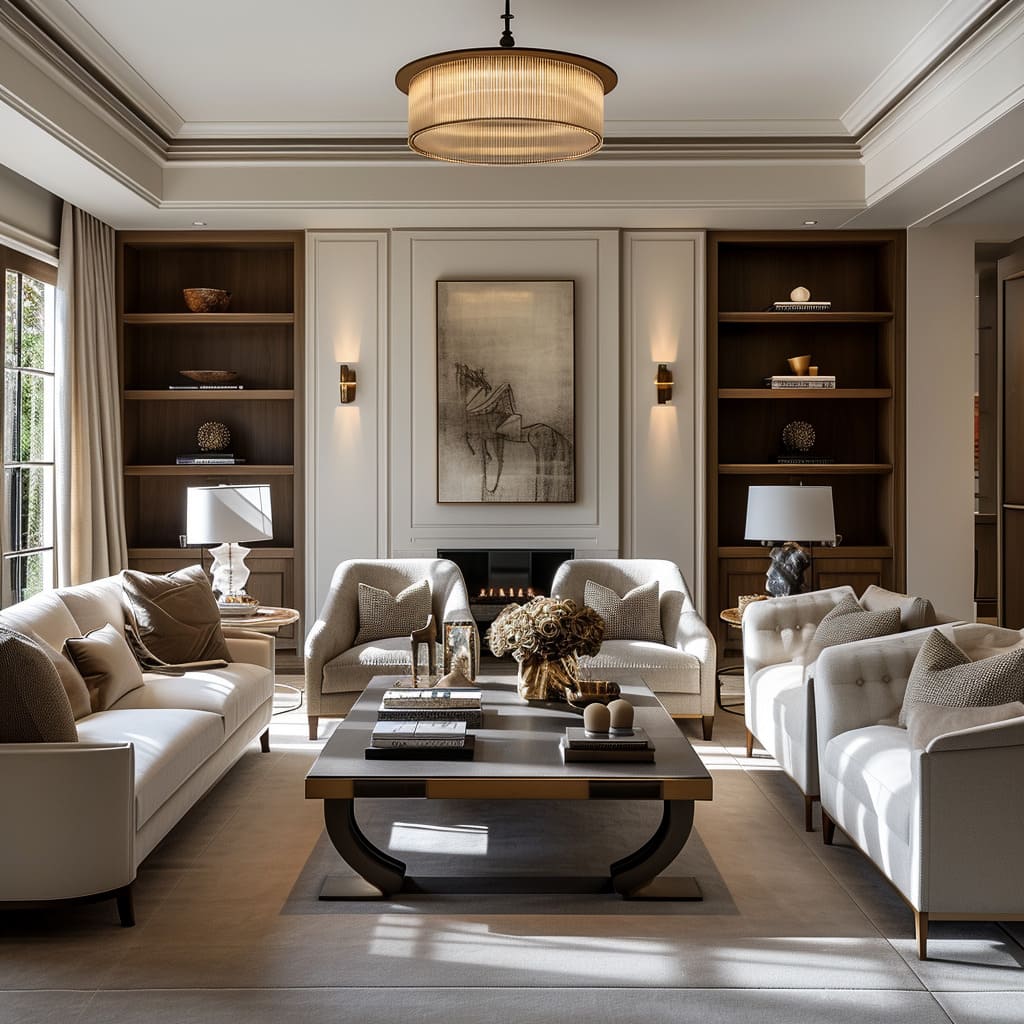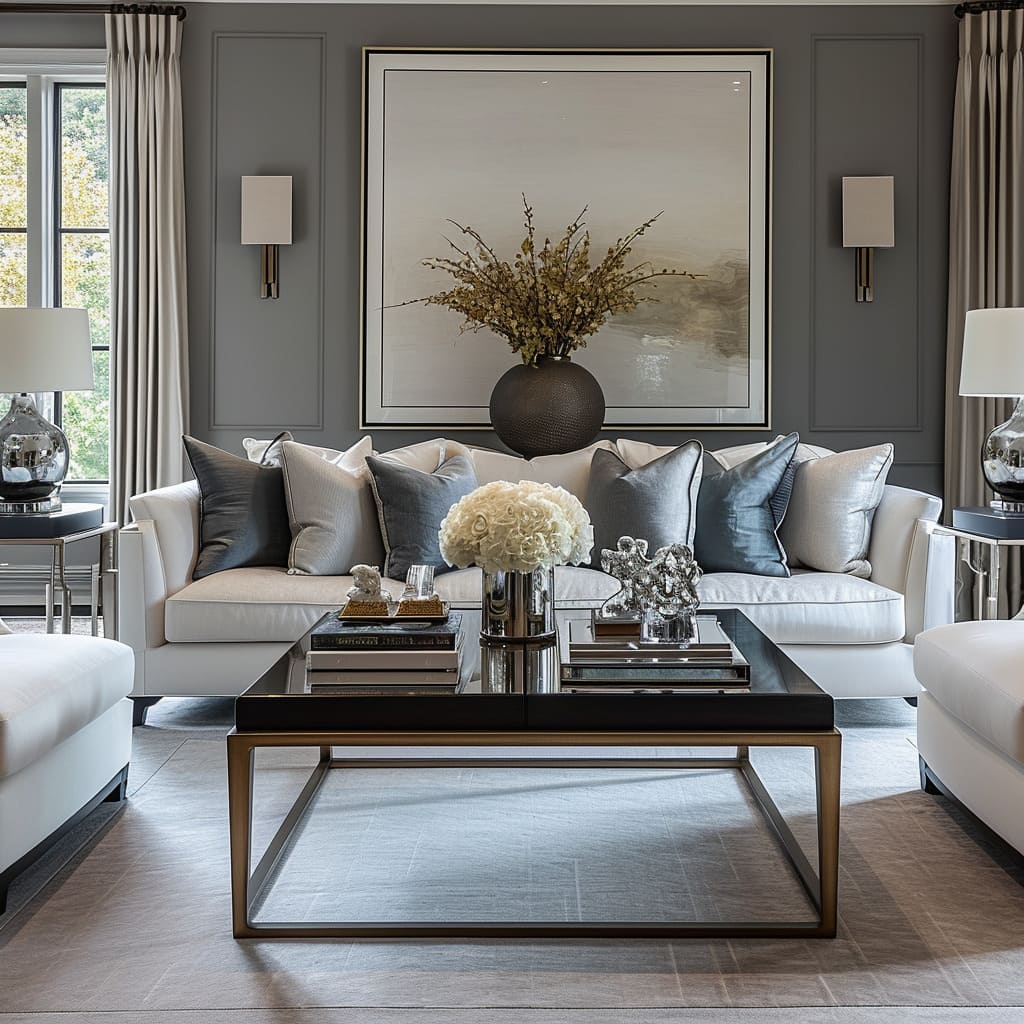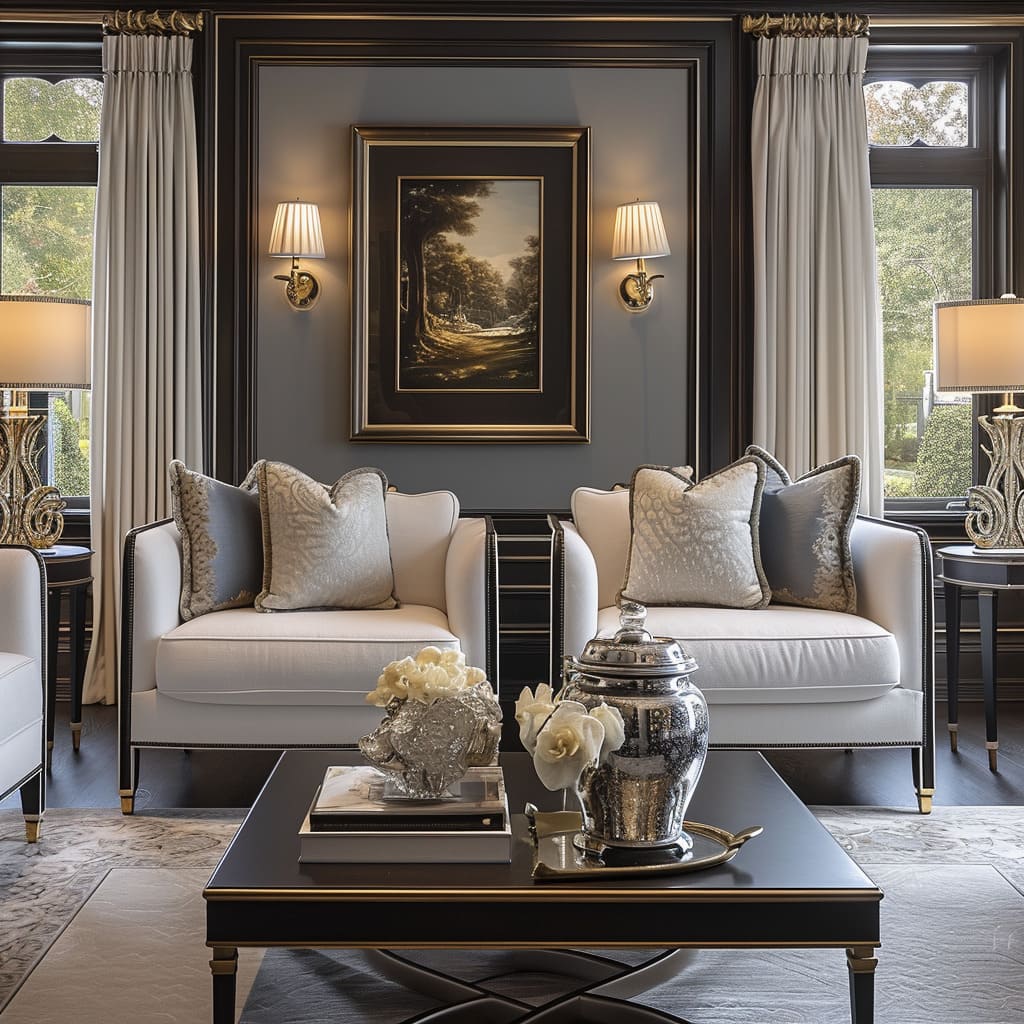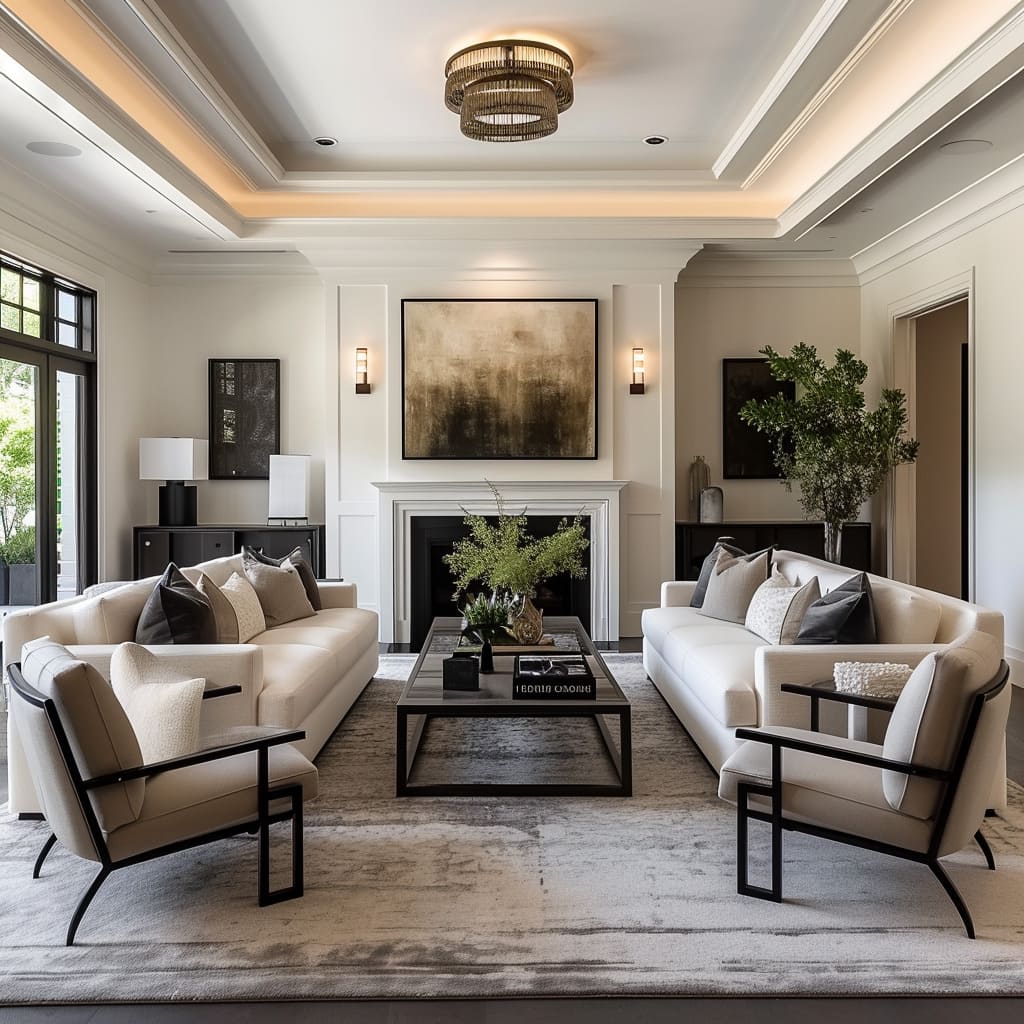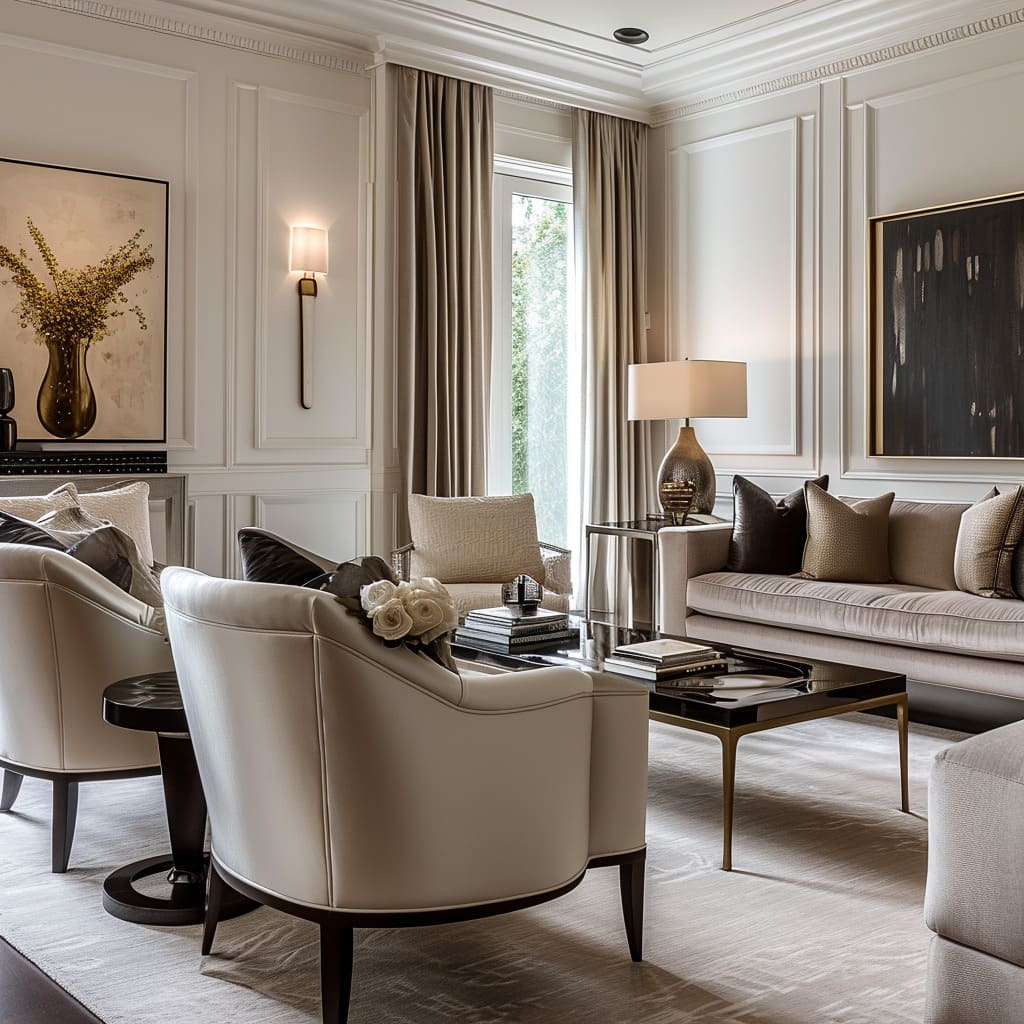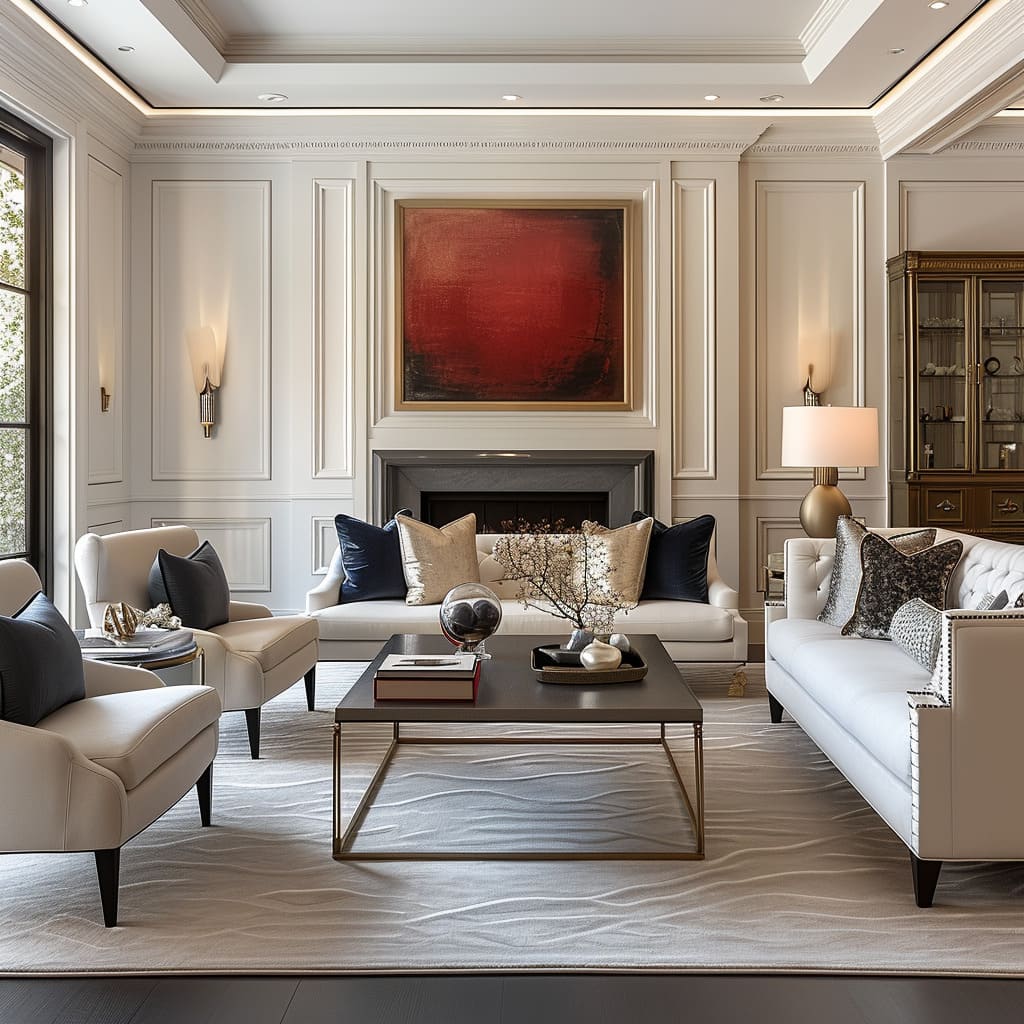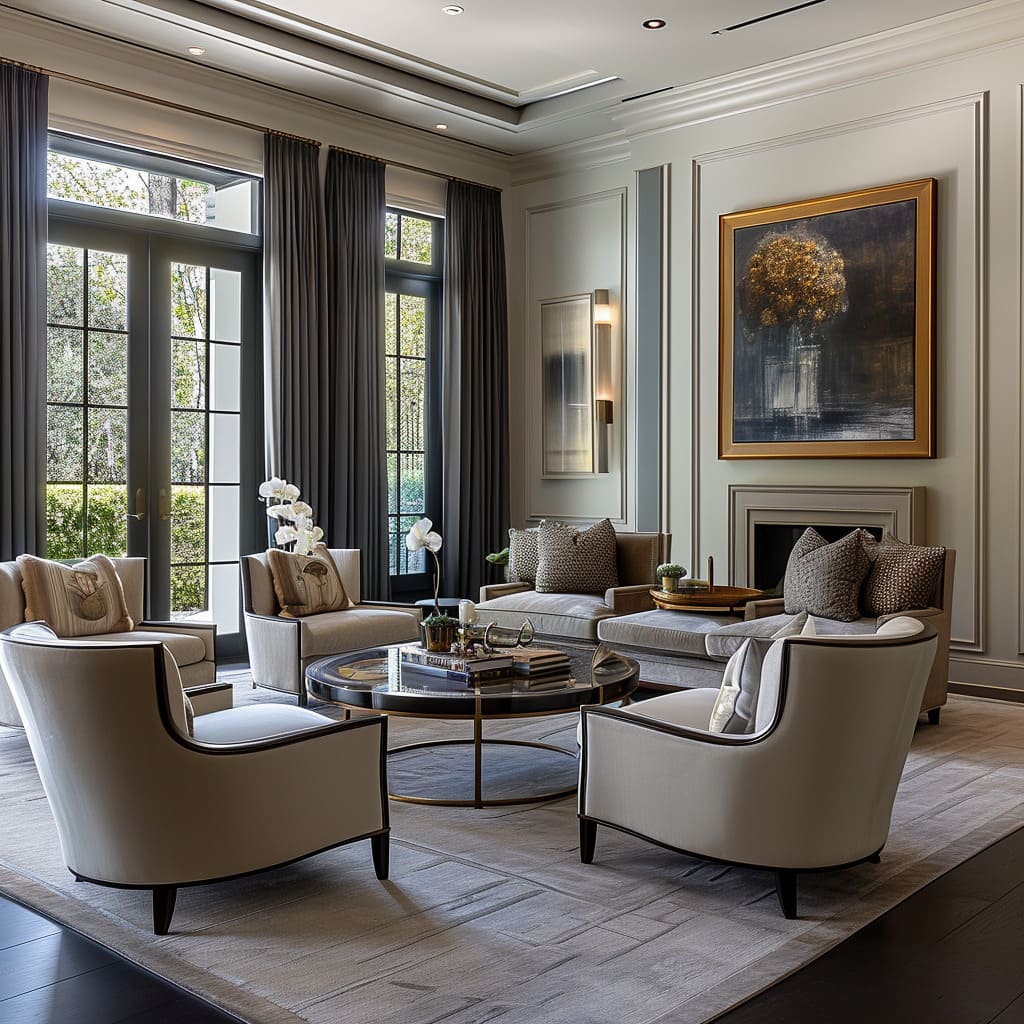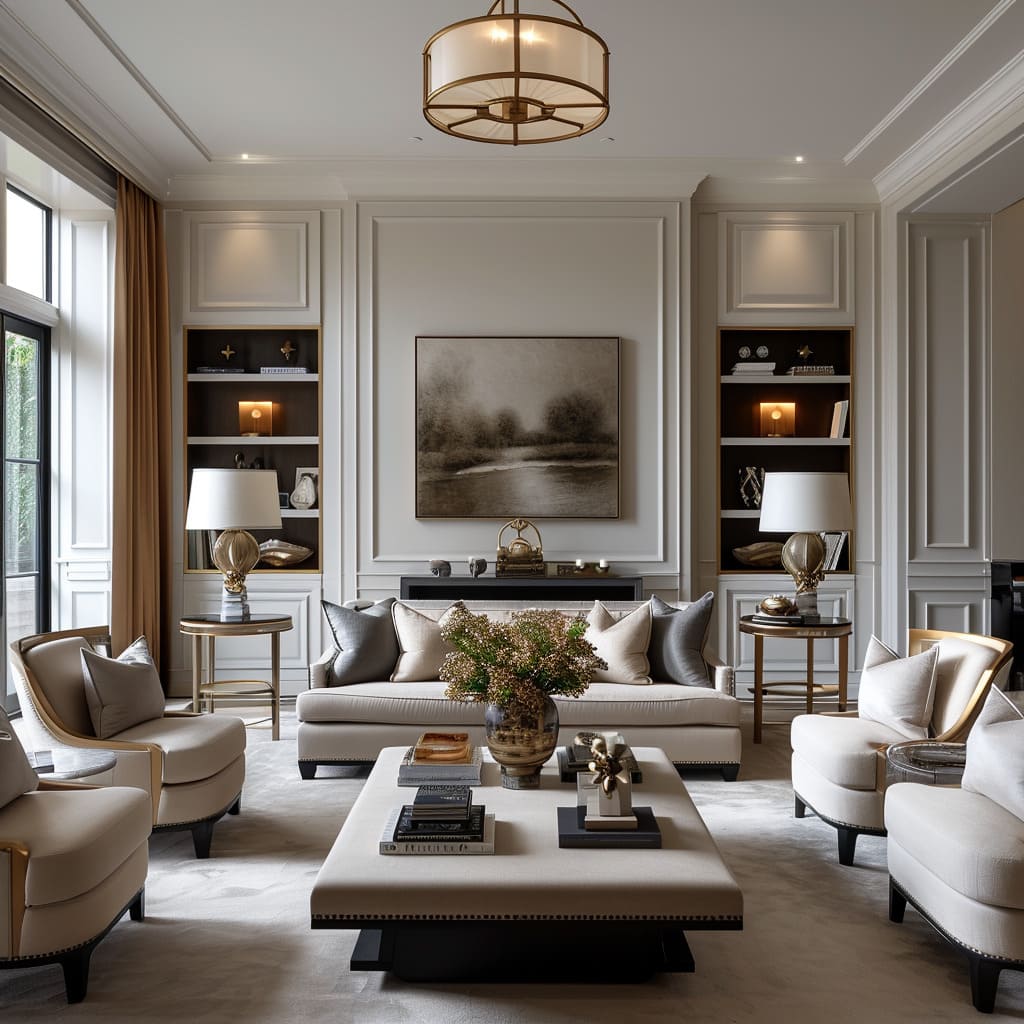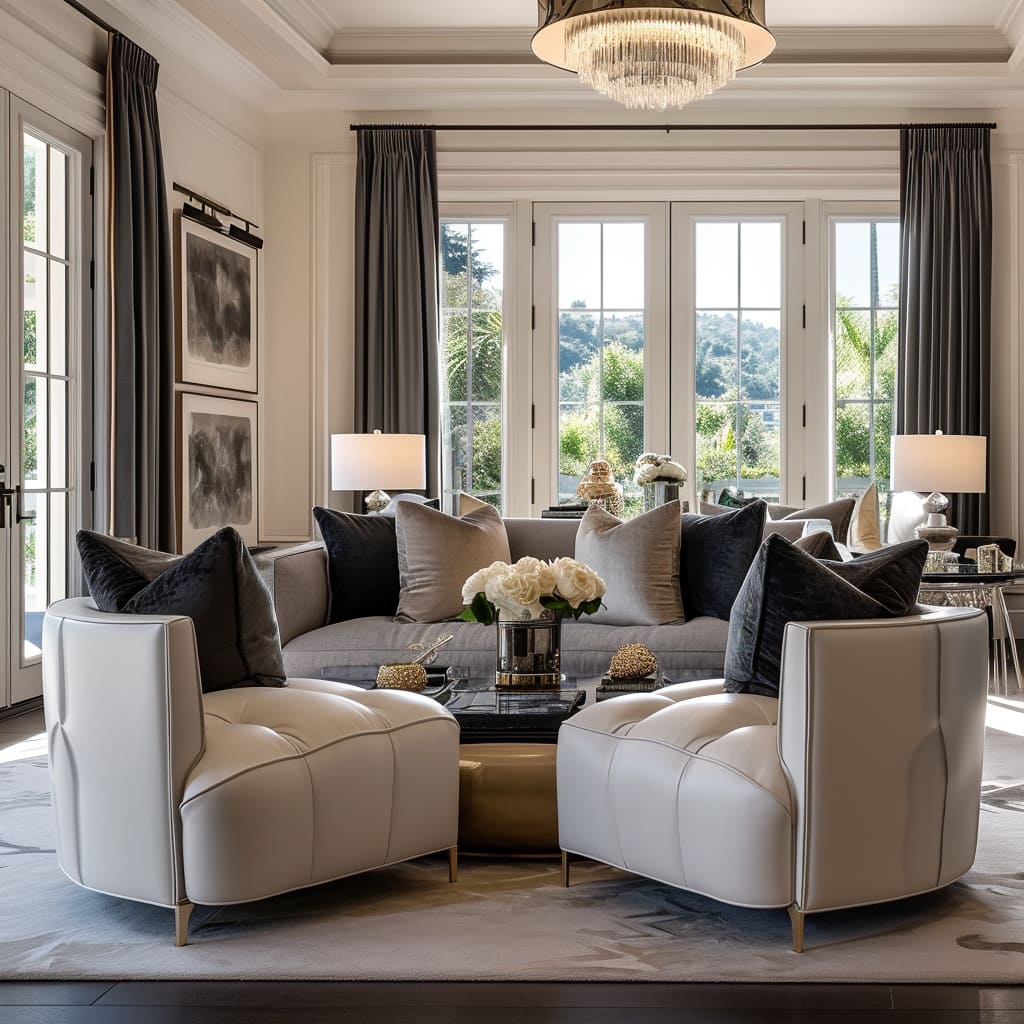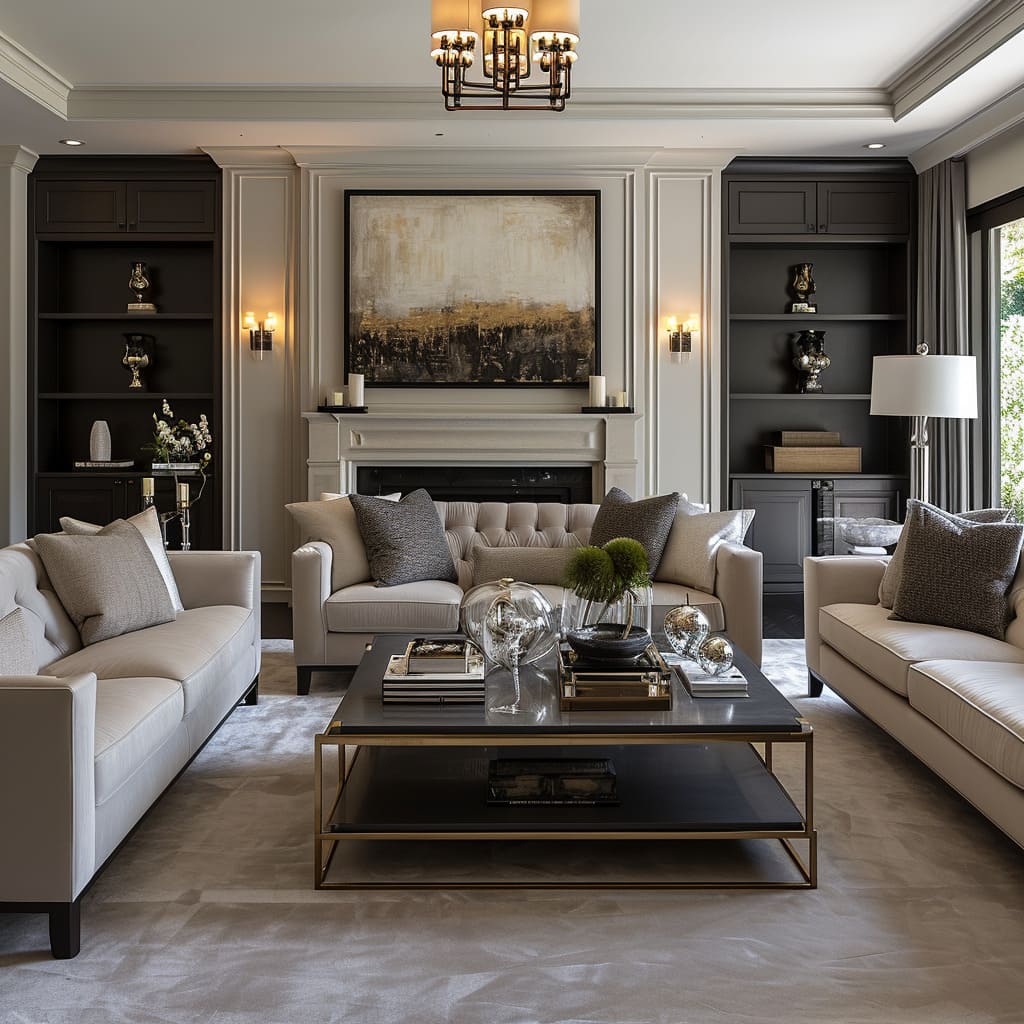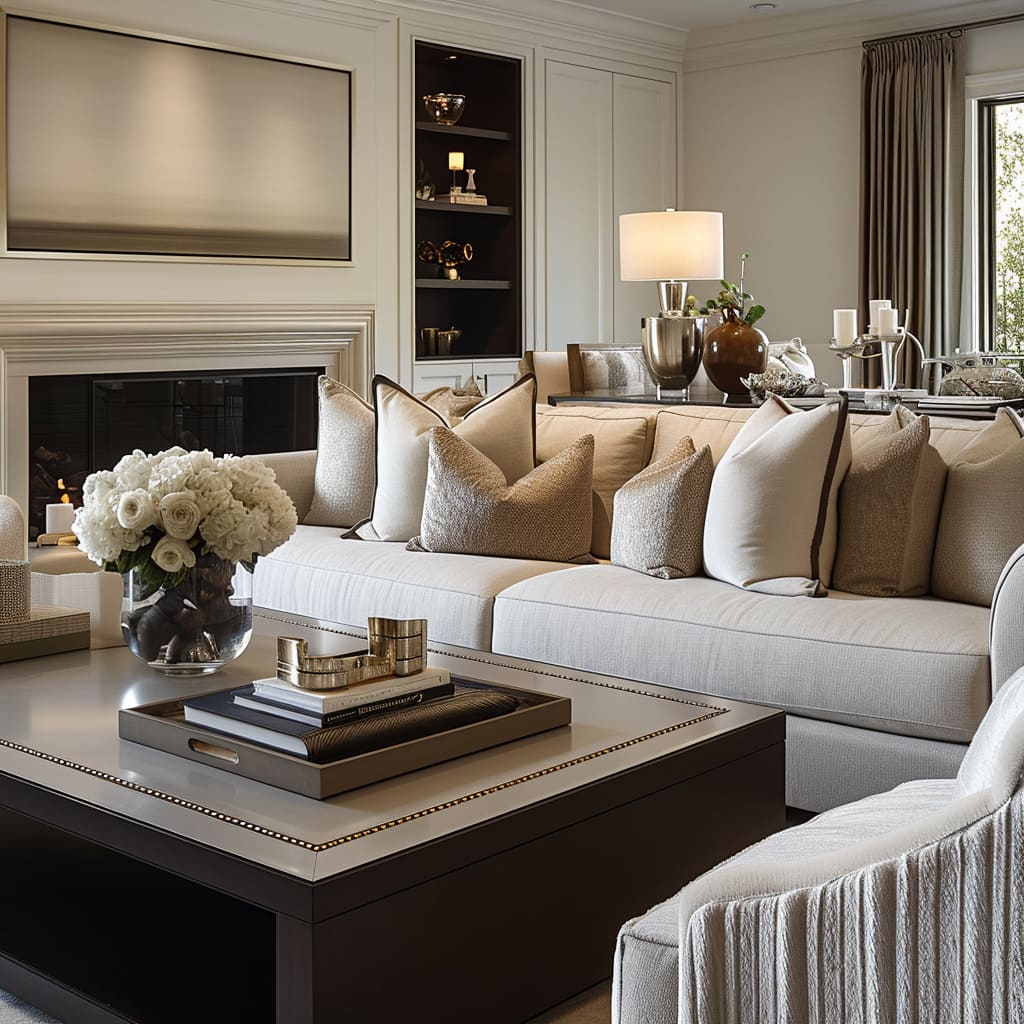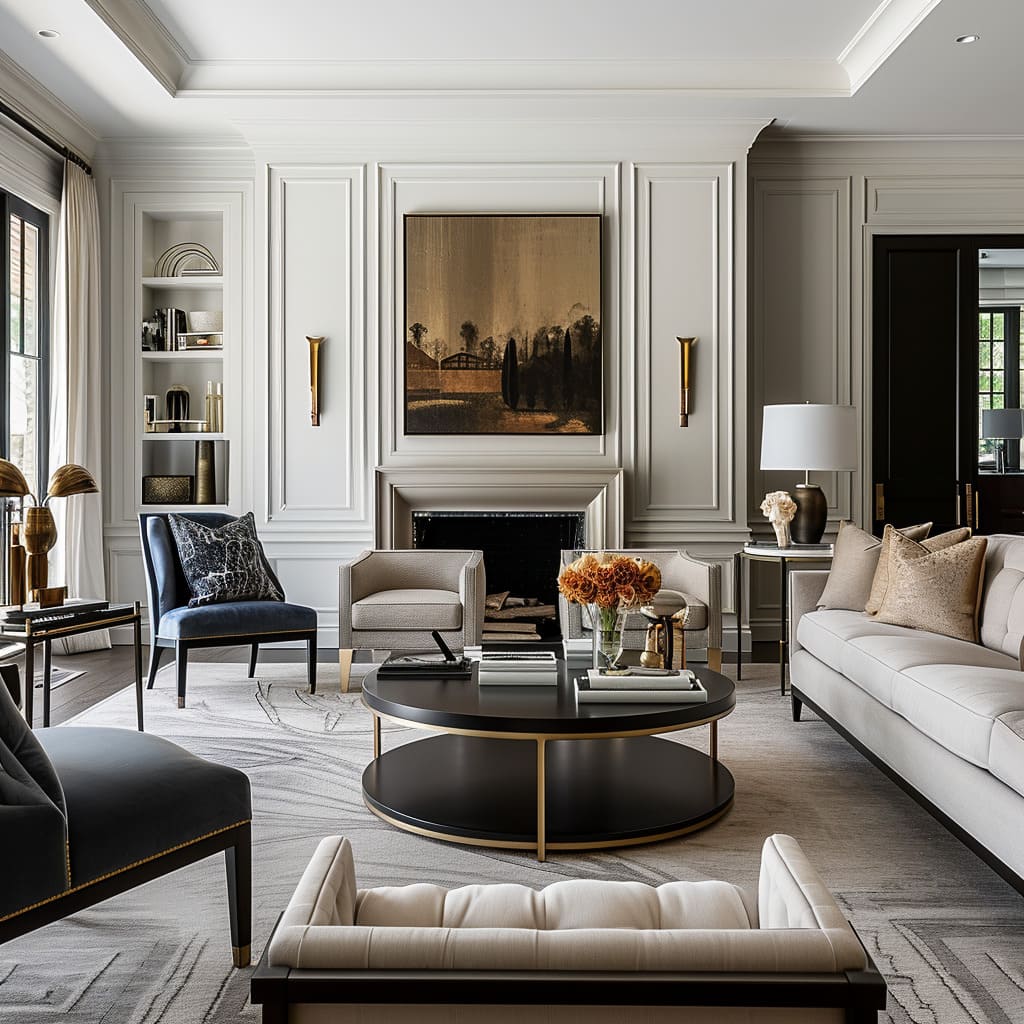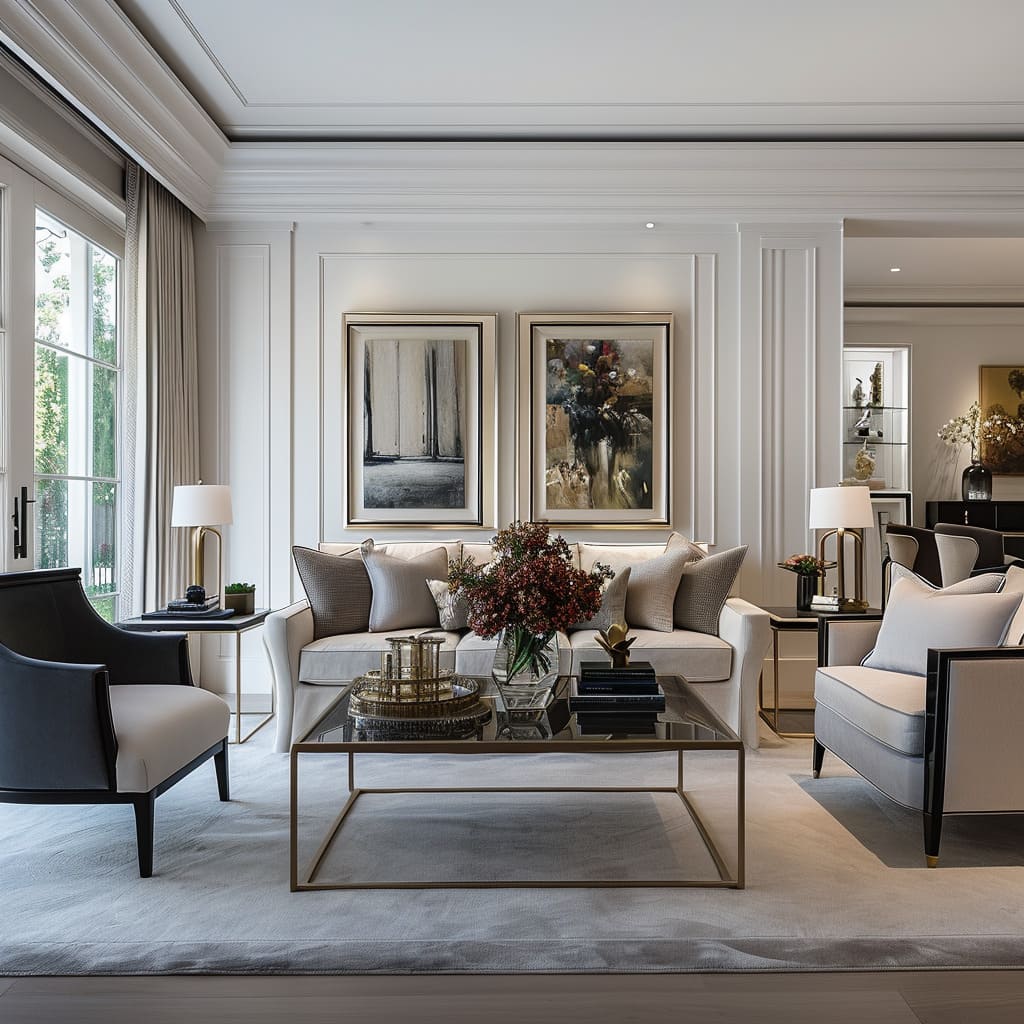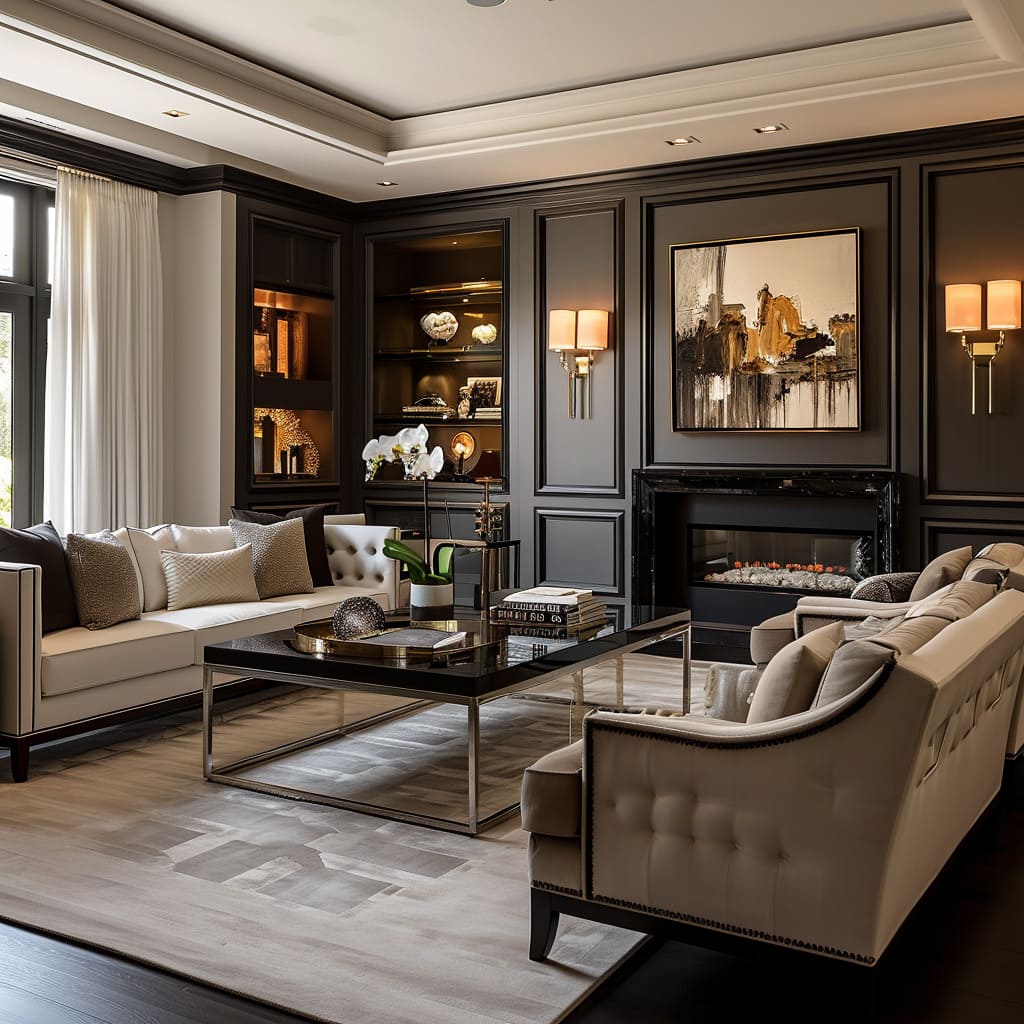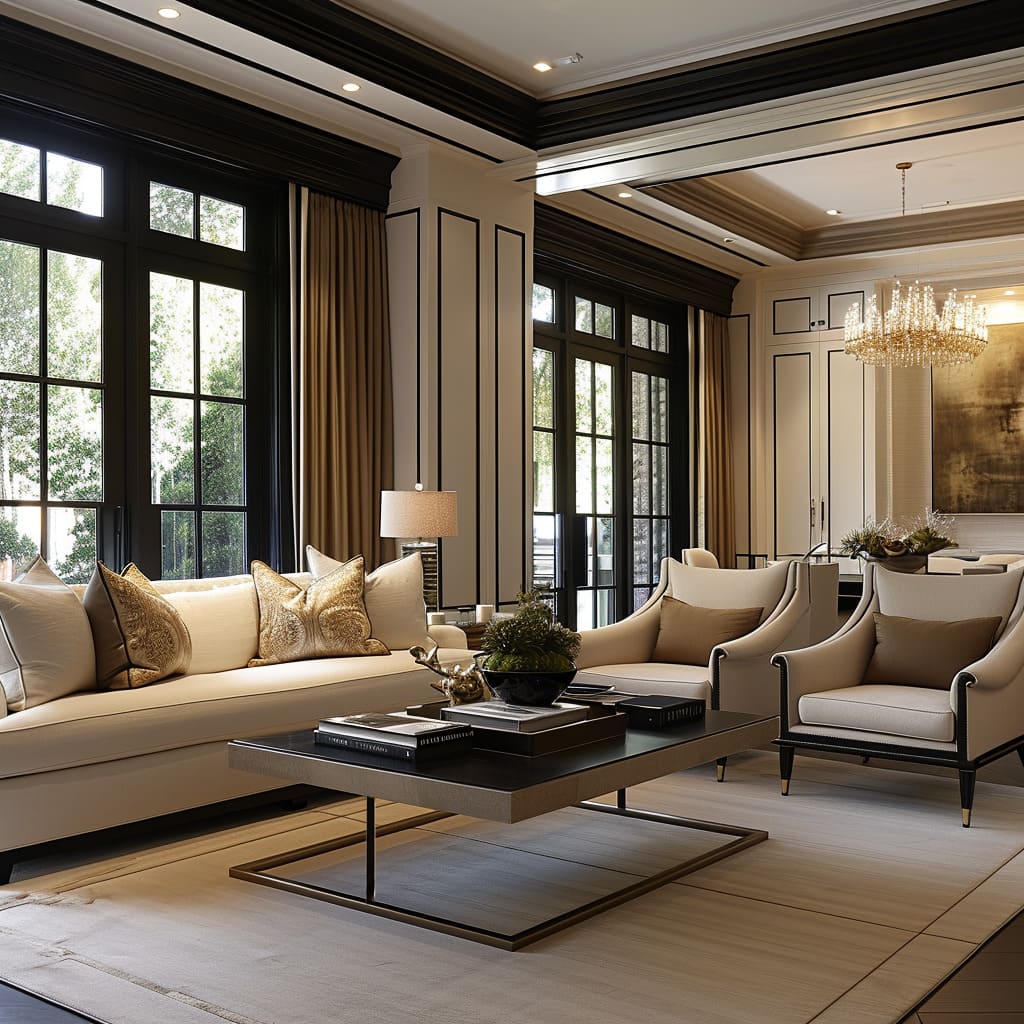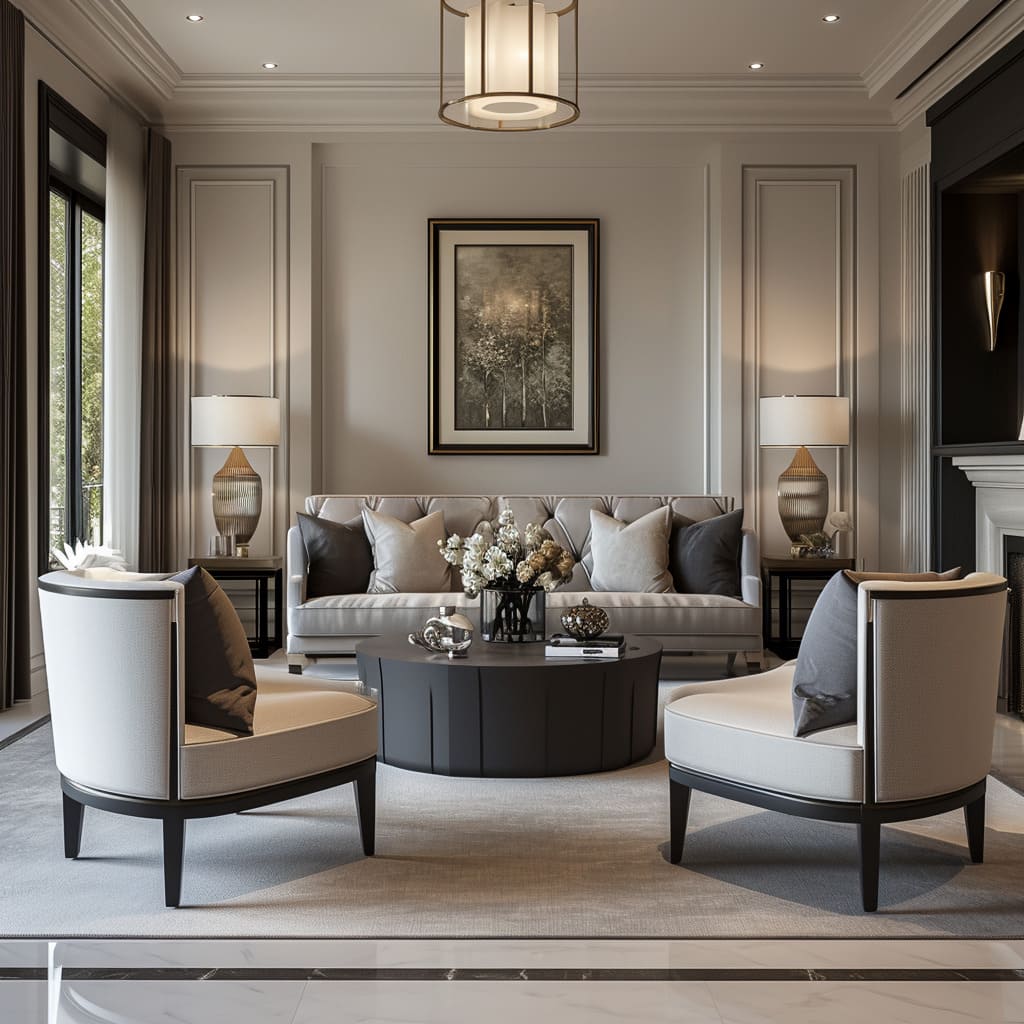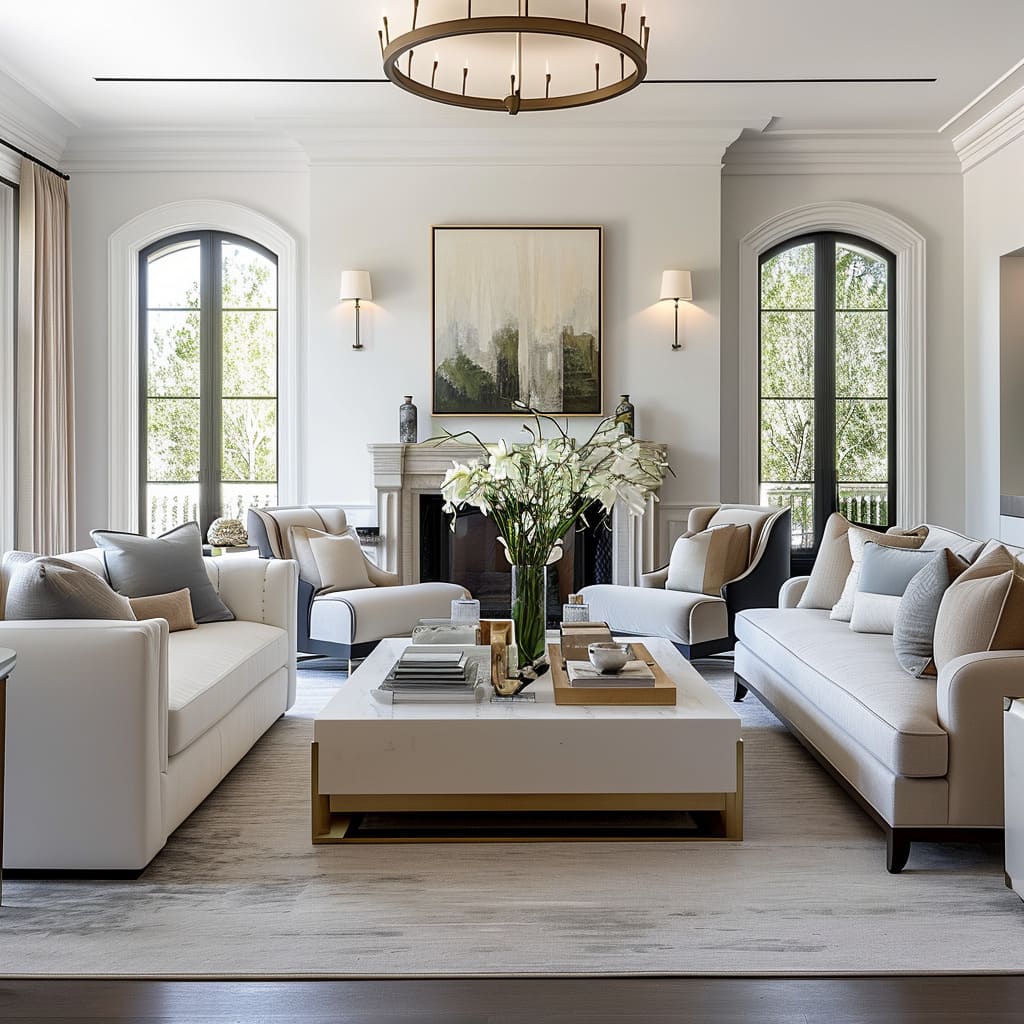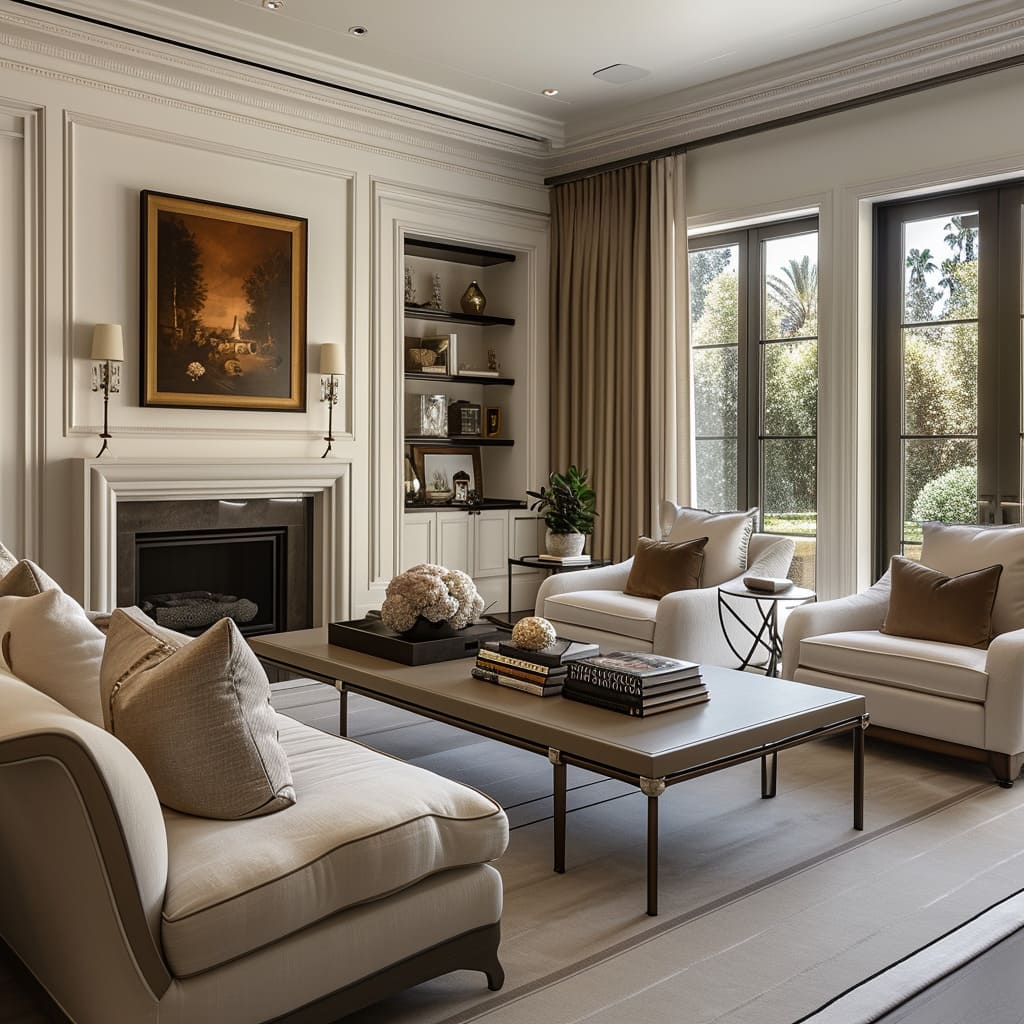The Transitional style emerges as a celebrated symphony of design elements, harmoniously blending the warmth and intricacy of traditional aesthetics with the clean lines and understated elegance of modern design, exemplifying the best transitional design ideas for living rooms. This style, standing at the crossroads of the past and the future, offers a unique solution for those who seek to balance the classic with the contemporary in their living spaces.
At the heart of Transitional design lies the philosophy of creating interiors that are timeless yet fresh, sophisticated yet approachable.
This article delves into the defining characteristics of Transitional interior design, exploring how this style artfully merges different design eras to create spaces that are both comfortable and chic, akin to examples of transitional style homes. From the subtlety of its color palette to the thoughtful integration of textures and patterns, Transitional design weaves a narrative that speaks to both tradition and modernity.
Each element, whether it be the furniture choices, the strategic use of accessories, or the approach to architectural details, contributes to a cohesive look that is as inviting as it is elegant.
Transitional interior design is more than just a middle ground between two distinct styles; it is a reflection of a lifestyle that values both heritage and progression, perfectly suited for luxury transitional living room inspirations. It caters to those who appreciate the beauty in simplicity and the elegance in understatement, creating environments that are not only aesthetically pleasing but also deeply resonant and personal.
As we explore the nuances of this versatile design approach, we uncover the secrets to achieving a balanced and harmonious home that transcends fleeting trends and stands the test of time.
The Transitional Interior Design
Transitional interior design stands out as an elegant blend of traditional and contemporary elements, forging a balance that epitomizes both comfort and sophistication. This design approach is renowned for its use of a neutral color palette, ranging from the soft tones of ivory to the deeper shades of taupe.
Such a choice in hues lays down a foundation that is at once calming and stylish, fostering a timeless appeal that allows for design flexibility and broad appeal.
In Transitional design, furniture lines are often straight with rounded profiles, combining the ornate and intricate details of traditional furniture with the clean lines of contemporary design. This can be seen in the choice of sofas and armchairs that feature plush, comfortable upholstery with sleek, understated frames.
The focus on comfort is evident in the ample seating and the plushness of the cushions. For further reading on how this style is applied in kitchen spaces, see Elegant Kitchens Where Tradition Meets Modernity.
The lighting fixtures in Transitional style are often simple yet sophisticated, avoiding overly ornate or purely minimalist designs. In the images, chandeliers and wall sconces are used to add a touch of luxury without overpowering the space. Explore more about this approach in bathroom settings in a guide to Contemporary Transitional Style Bathrooms.
These fixtures serve as a focal point and are usually made of materials like brushed nickel or polished chrome, complementing the neutral color scheme.
Textiles in Transitional interiors often feature a variety of textures to add depth and interest to the space. This can be seen in the throw pillows and rugs, which use a mix of fabrics like velvet, silk, and chenille.
The patterns are generally subtle, focusing on tone-on-tone or small-scale designs that don’t dominate the space.
Artwork and accessories are carefully curated to add personality to the space without cluttering it, embodying the minimalist accessories typical of transitional design. Transitional style favors a less-is-more approach, with art pieces that have a modern flair but are framed in a way that nods to classic styles.
The decorative objects are usually made of glass, metal, or wood, and are chosen to complement the furniture and add a cohesive look to the room.
Wood tones in Transitional design are typically mid-range, neither too light nor too dark, which helps to ensure that the space feels both warm and airy, as recommended in transitional design trends 2024. This can be seen in the flooring and furniture, which often feature walnut or oak with a satin finish that highlights the natural grain of the wood.
The architectural elements in Transitional design, such as moldings, trim, and built-in shelving, are simplified versions of traditional designs. They provide a sense of craftsmanship and detail without being overly decorative.
This approach is evident in the clean lines of the fireplace surrounds and the cabinetry in the images.
Overall, the Transitional interior design style is about balance and harmony, blending the old with the new to create spaces that are both comfortable and chic. It’s a versatile style that can adapt to individual tastes while maintaining a cohesive and curated look.
Get an approximate cost for the living room and your entire home with our renovation cost calculator. Use the remodelling calculator to help budget and plan your interior design project effectively.
Key features of Transitional Interior Design
Transitional interior design is an elegant and timeless style that bridges the gap between traditional and modern aesthetics. Here is a list of its main features, along with an explanation of the role of each:
Neutral Color Palette
The backbone of Transitional style is a neutral color scheme, which creates a serene and inviting atmosphere. It allows for versatility in decor choices and ensures the space doesn’t feel dated as trends change.
Neutrals provide a canvas for texture and subtle contrasts.
Blend of Traditional and Modern Furniture
Transitional furniture merges the ornate detail of traditional styles with the simplicity of contemporary design. This creates a balanced look that is both sophisticated and comfortable, and which emphasizes clean lines without sacrificing ornamentation.
What Can You Achieve with Your Current Budget?
Not Sure What Your Budget Will Allow? Get Instant Clarity by Entering Your Details.
Enter values to determine renovation level
Textural Elements
Varied textures add depth and tactile interest to the understated color palette of a Transitional space. Fabrics like leather, suede, chenille, and velvet are often juxtaposed to create a layered look that invites touch and adds warmth.
Minimalist Accessories
In Transitional design, accessories are used sparingly but effectively to create focus without clutter. Every piece is carefully selected to contribute to the design narrative, ensuring that each accessory has a purpose and a place.
Subtle Patterns
Patterns in a Transitional interior are often subdued and may include classic stripes, geometrics, or florals. They are integrated in a way that complements the neutral palette and adds interest without overwhelming the space.
Sophisticated Lighting
Lighting fixtures in Transitional spaces combine the intricate designs of traditional lighting with the streamlined aspects of modern fixtures. They serve as statement pieces that can dictate the room’s ambiance, providing both functionality and style.
Mixed Metals
Transitional design often incorporates mixed metal finishes, such as iron, gold, silver, and bronze, to add visual interest and layers of detail. Metals are chosen for their ability to complement the neutral tones of the room and for their textural contrast.
Functional Comfort
Comfort is key in Transitional interiors, with an emphasis on livable spaces. Furniture is selected not only for its aesthetic appeal but also for its comfort and usability, ensuring that the space is both beautiful and practical.
Harmonious Blend of Shapes
The Transitional style often features a mix of straight and curved lines, creating a balance that is neither too sharp nor too ornate. This blend of shapes helps to soften the overall look and adds a dynamic flow to the space.
Simple Architectural Details
Architectural elements like moldings, columns, and built-ins are designed with a simpler profile than in traditional settings. They retain an air of sophistication while contributing to the clean and uncluttered feel of the space.
Strategic Use of Color
While the overall palette is neutral, Transitional design allows for the strategic use of color in accents and art. A pop of color can add personality and focus to a room without disturbing the overall calm and cohesive look.
Wood Tones
Wood in Transitional interiors is often of a medium shade, striking a balance that works with a variety of color schemes. It is typically finished in a way that enhances the natural beauty of the grain, adding warmth and organic character to the space.
Reflective Surfaces
Mirrors, glass, and shiny metals are frequently used to reflect light and create a sense of depth and openness. These reflective surfaces add a layer of sophistication and a modern touch to the rooms.
Balanced Proportions
Proportion is carefully considered in Transitional design, with a focus on creating a balanced space. Furniture and decor are scaled to the room to ensure that the space feels harmonious and well-composed.
Window Treatments
Transitional rooms often feature simple yet elegant window treatments. Luxurious materials in a straight-hanging format, such as Roman shades or understated draperies, provide privacy and light control while complementing the room’s sophisticated aesthetic.
Conclusion: The Timeless Appeal of Transitional Interior Design
In conclusion, Transitional interior design represents a masterful blend of the past and the present, creating spaces that are as timeless as they are modern, a key trait of luxury transitional living room inspirations. This style’s distinctive approach of combining traditional elegance with contemporary simplicity results in interiors that are both sophisticated and approachable.
The neutral color palette, a signature of this style, acts as a versatile canvas, allowing for an evolving array of decorative choices while maintaining a serene and cohesive atmosphere. The careful selection of furniture, which marries the ornate with the minimalist, adds to the unique charm of Transitional interiors, offering a comfortable yet refined aesthetic.
Textural variety, subtle patterns, and minimalist accessories work in concert to create a rich sensory experience that is visually pleasing and tactilely inviting. The strategic use of lighting, mixed metals, and color accents further enhances the beauty and functionality of these spaces.
The emphasis on comfort and practicality ensures that Transitional interiors are not just visually appealing but also truly livable and welcoming.
The style’s balanced use of architectural elements and window treatments adds to its sophisticated yet uncluttered look, making it suitable for a variety of living spaces. The harmonious blend of shapes and the careful consideration of proportions contribute to the overall sense of harmony and elegance.
Transitional interior design is more than just a meeting point between the old and the new; it is a testament to the enduring beauty of balanced design. It offers a flexible and timeless approach to decorating that appeals to a wide range of tastes and styles, making it an ideal choice for those looking to create a home that is both classic and contemporary.
In essence, Transitional design encapsulates the best of both worlds, providing a framework for creating spaces that are sophisticated, comfortable, and endlessly inviting.

